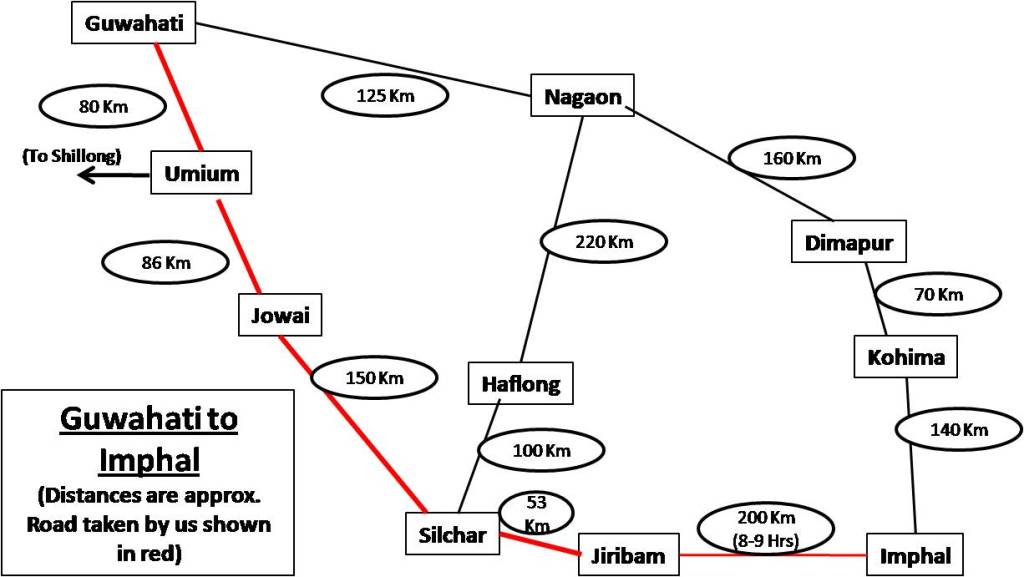
“Why do you want to travel to Manipur on holiday? Isn’t that like taking a risk?”
Most folks paraphrased these words in reaction when they heard about my plan of a driving trip to Imphal. Well- meaning (and perhaps right too!) as they all were, I wasn’t about to heed their caution. Daring the fate it may have been, but here I am back from the journey and writing this blog post.
There may not have been much to the alarm. After all, Imphal of late has become a favourite destination for bikers. The city has everything from Pizza Hut to KFC to traffic snarls to airbnb (we stayed in one). Its broad four-lane roads rival those in any metro city. But on the other hand, the calm can be deceptive. After all, Manipur was rocked by a violent insurgency for decades and continues to be under Armed Forces Special Powers Act. Our host in Imphal had cautioned us to strictly follow the route he had laid down for us from Jiribam and not venture in any other direction. In fact, three days later, on the very day of our departure from Manipur, the papers reported a bomb blast and groups in Imphal called for a shutdown to protest an official state visit.
Reality, it seems, is what you choose to see.
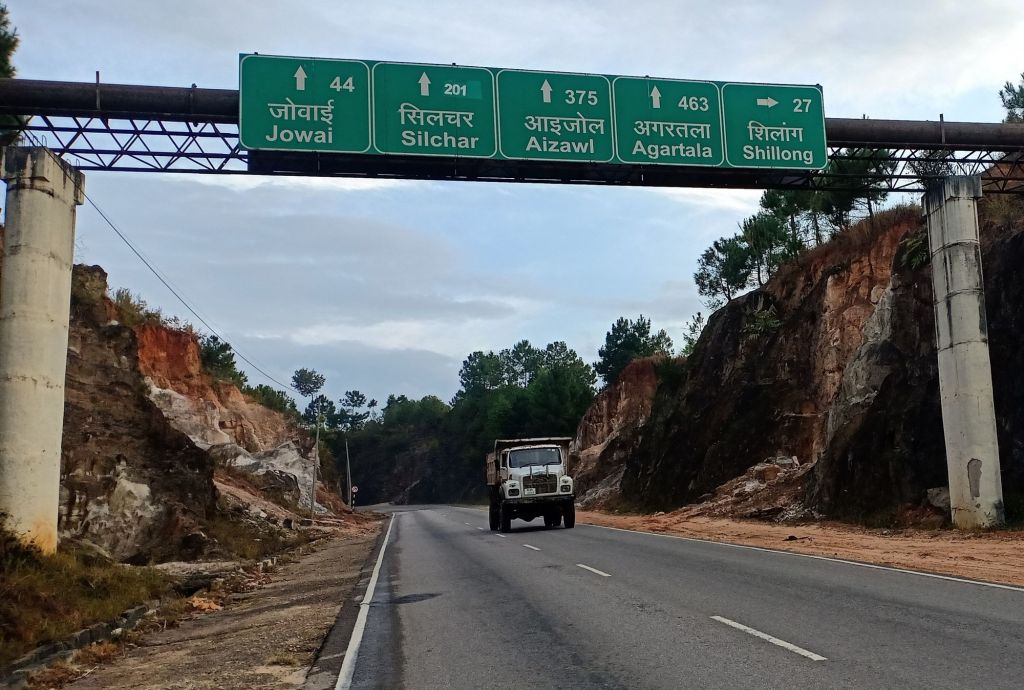
Day One: Guwahati to Jowai
We left Guwahati well past noon, aiming to touch Silchar by night. Driving on the high- traffic bypass road till Jorabat crossing was irksome as usual. But the highway thereafter was a breeze. Meghalaya border and the villages of Umium and Umroi went past without a hitch whatsoever.


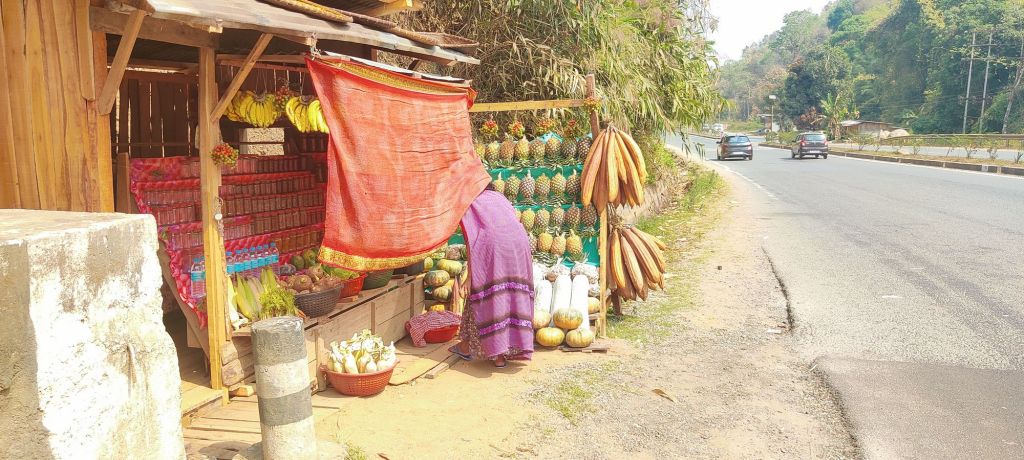
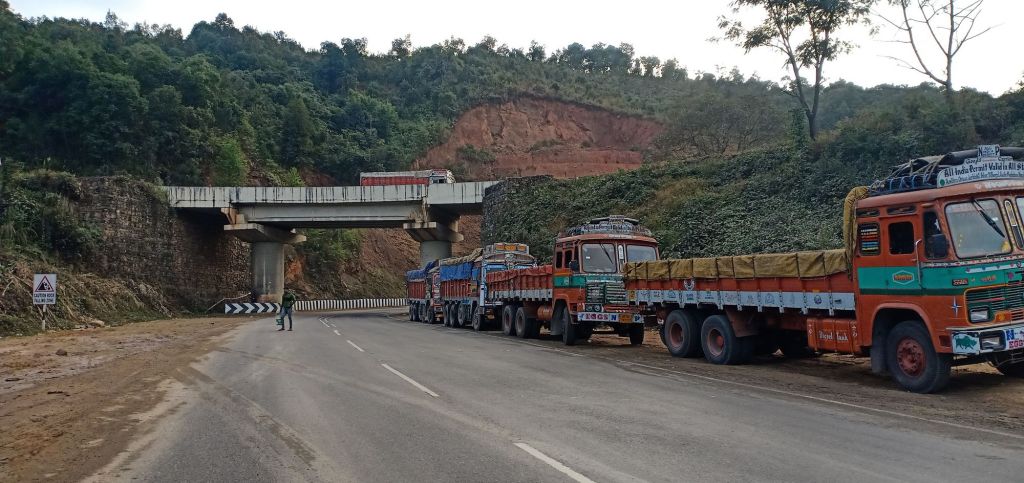
But one ought to be conscious that road journeys in the North East are nothing if not unpredictable and adventurous (I knew it very well of course!). Just as we were beginning to look forward to the prospect of a timely arrival in Silchar and a good night’s sleep, we ran into an unending line of stationery trucks and cars at around 5.00pm (Note: In the North East, dusk falls at 4:30pm in winters).

It looked like a substantial traffic jam, the full extent of which was unknown to us- or to anybody on the road, for that matter. After around 40-45 minutes, the vehicles began to move forward at snail’s pace. We heaved a sigh of relief.
How wrong were we!
To cut a long story short, here we were facing a truly hopeless, massive jam that snaked past numerous mountains, cliffs, villages and bridges in the dead of night (My car dial showed an end- to- end distance of close to 15Kms). Stuck in the gridlock were buses full of carefree Meghalayan teenage boys and girls who were making the best of their time dancing to full-blast music played on bus stereo system, while the rest of us despaired in our cars as to what lay ahead. Cops did appear a few times but only to push aside vehicles and force a way for some top shot’s siren- blaring motorcade.
By the time we escaped from that mighty mess, it was 10.30pm. Outside temperatures were dropping rapidly to single digits and Silchar was still over 150Km away. There was no other option but to cut short the journey and knock on desolate hotel doors on the outskirts of Jowai town. We were exceptionally lucky because we found passable accommodation without too much trouble. But it also meant that next day we would be rushing to cover a much larger distance than originally planned.
Dinner? No sir, the kitchen is closed now. Sorry madam, no tea also. The cook left. Hot water for bath? Not available now madam, but you will get it at 4.00am sharp! Good night sir.
******
Day Two: Jowai to Imphal
We dutifully got up at 4.00am. A hot water bath never felt more welcome. Last night’s mammoth traffic jam was apparently still resolving itself, because from the vantage location of our hotel, we could see bunches of SUVs, trucks and buses arriving periodically and passing us by.
Recap:
* A five- hour, fifteen-km long traffic jam, on a chilling, moonlit winter night, on a mountain road
* Unscheduled midnight stay in an unknown hotel (I slept in the drivers’ dormitory!)
* No meal for over 18 hours.
Our road trip was totally living up to its promise of untold adventures. And it was just beginning.
Ignoring the bitter cold outside, we made an exit by 6am and set off for onward journey. Fortunately a fuel station just outside Jowai town was open, enabling us to top up.
Just as we were hitting the highway, we passed by this awesome visual of two trucks and their crew that would challenge one to imagine what exactly could have happened there.
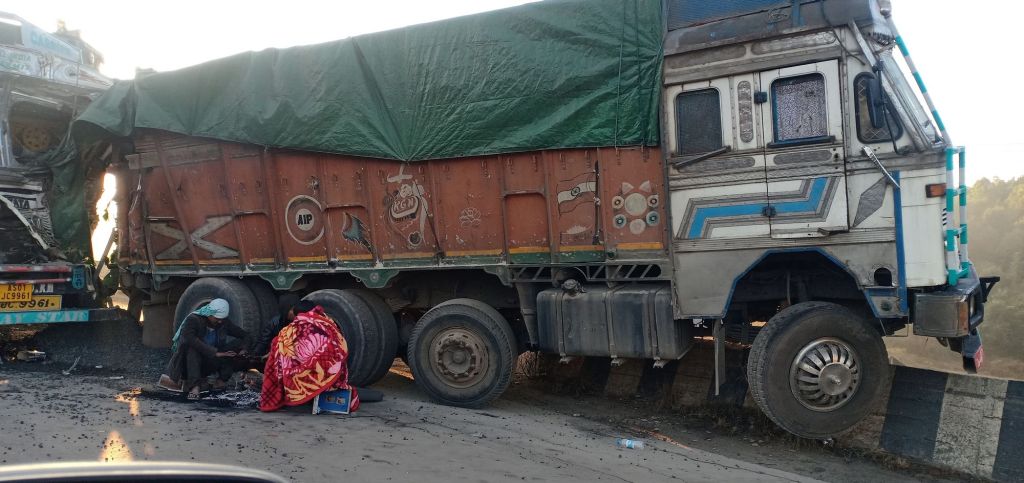
The towns en route were stirring themselves awake.
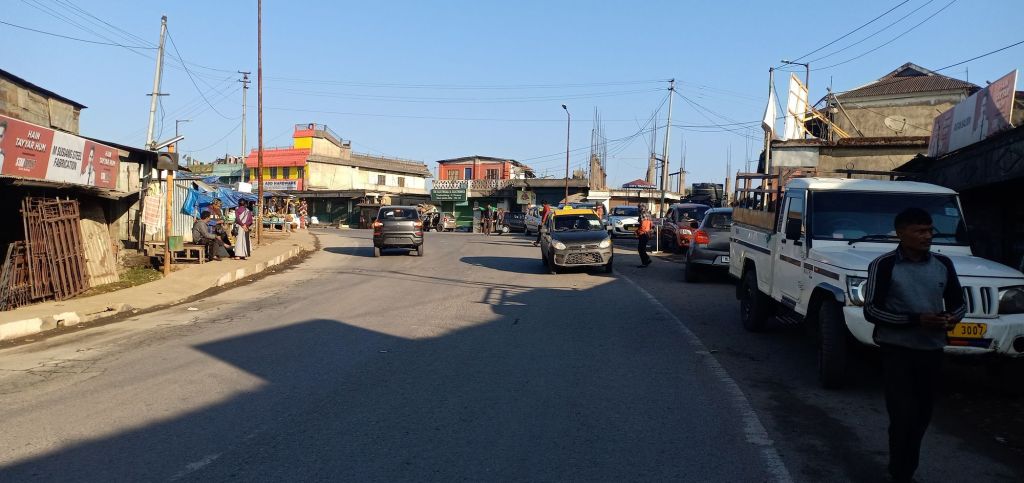
After a long search, we found breakfast at a roadside shack.

All tanks full, we began to zip towards Silchar. The twisting road was smooth as silk and the lush green view on the sides was beautiful.


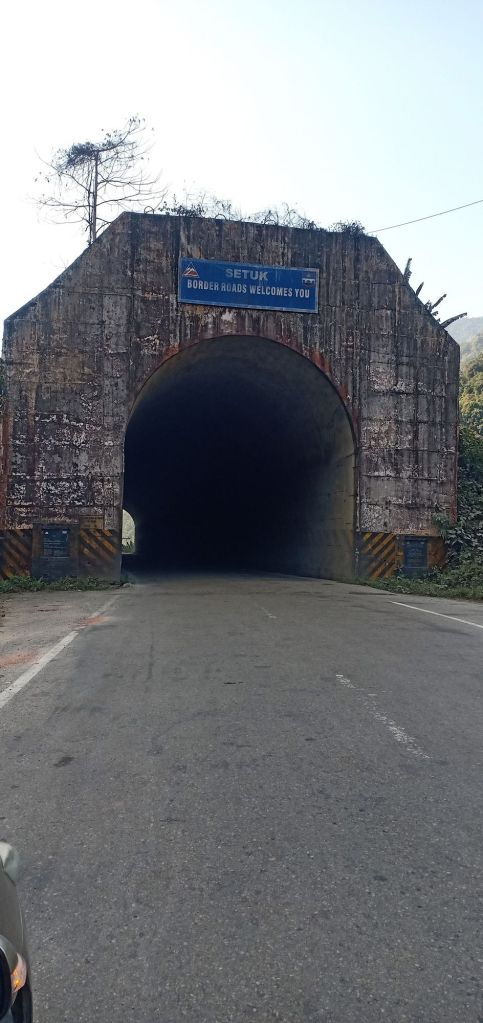

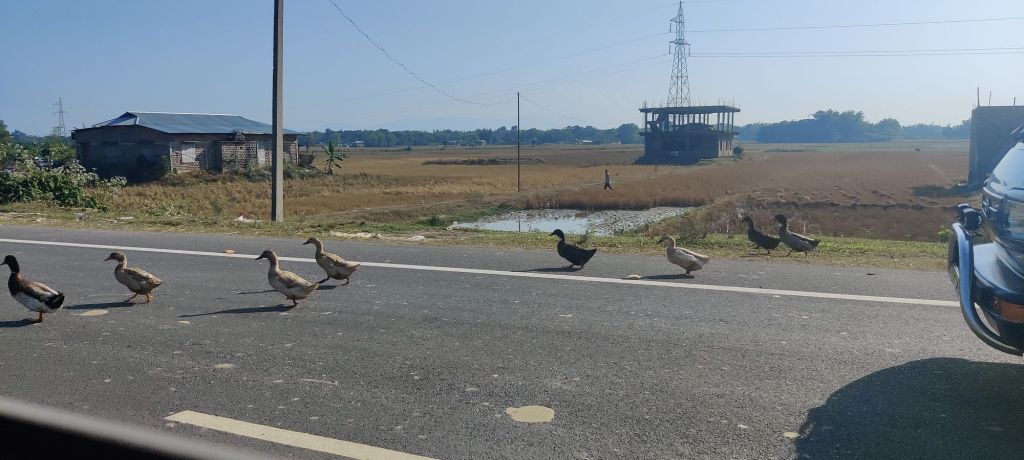
From one particular spot near the mountain village of Ratachera, one can see the vast plains of Bangladesh spread below.
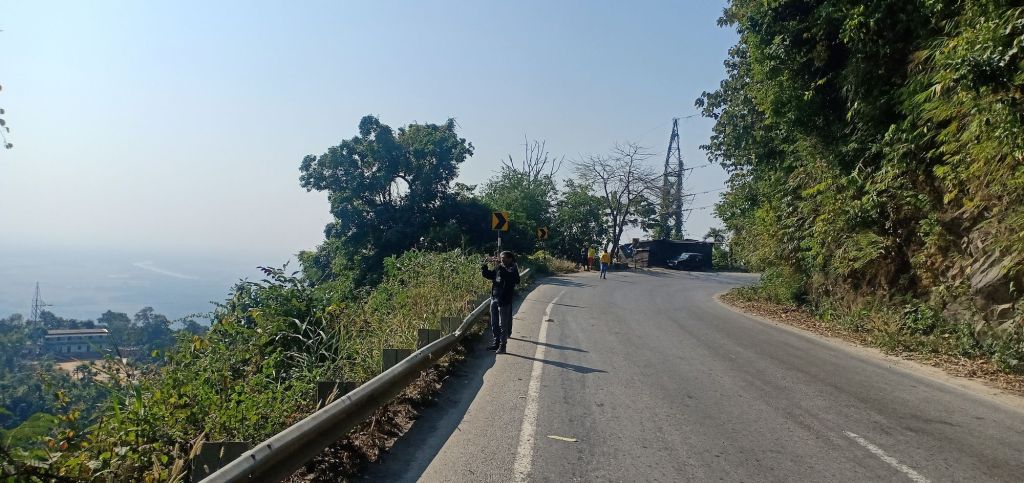
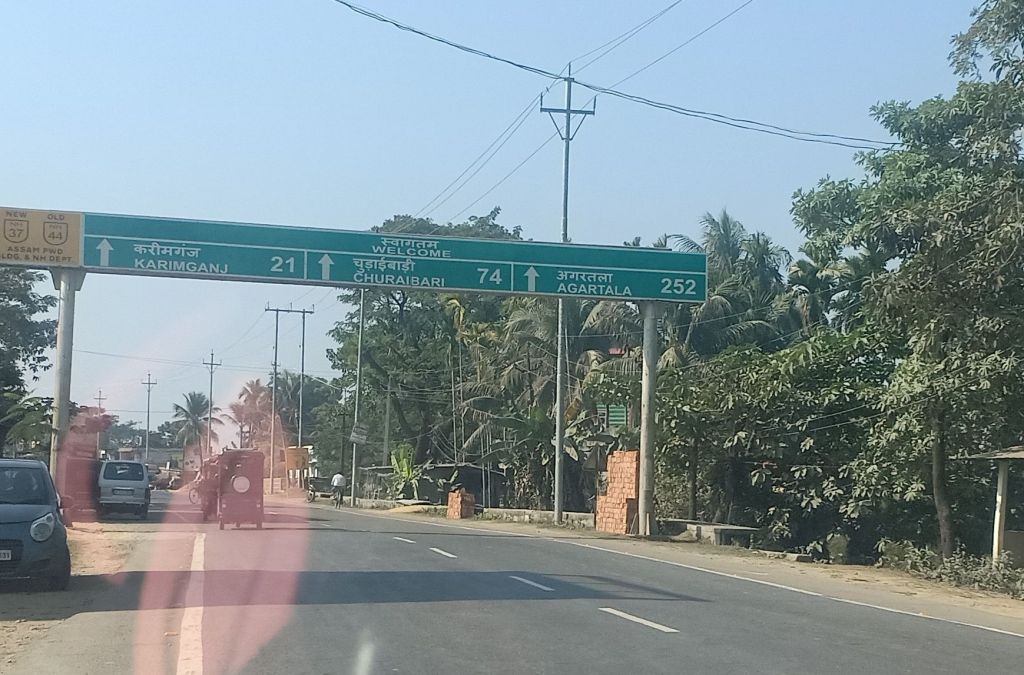
Google maps made us cross Silchar city through a densely crowded area which took a bit of time. Finally, at around 1.00pm, for the first time, we saw the name of our destination on a signboard.
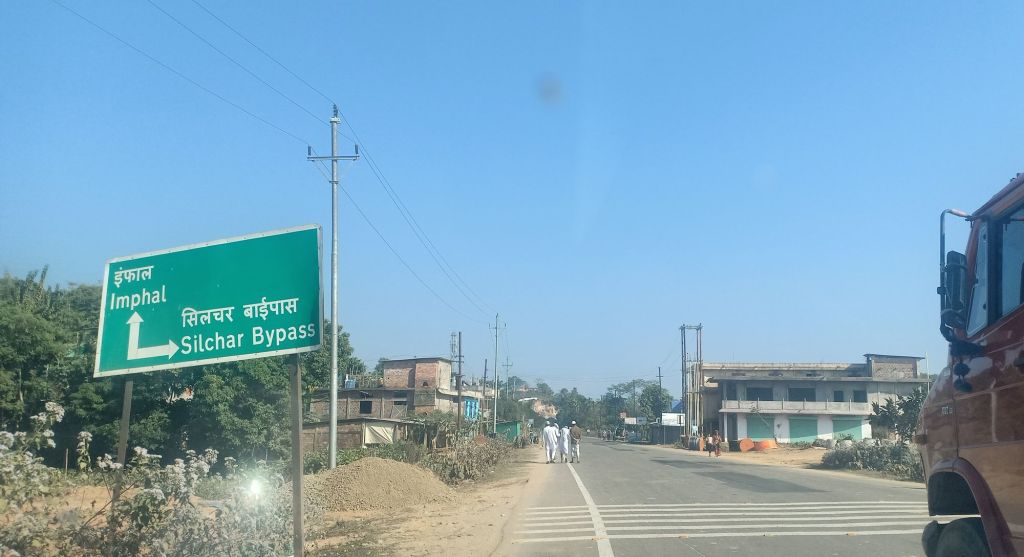
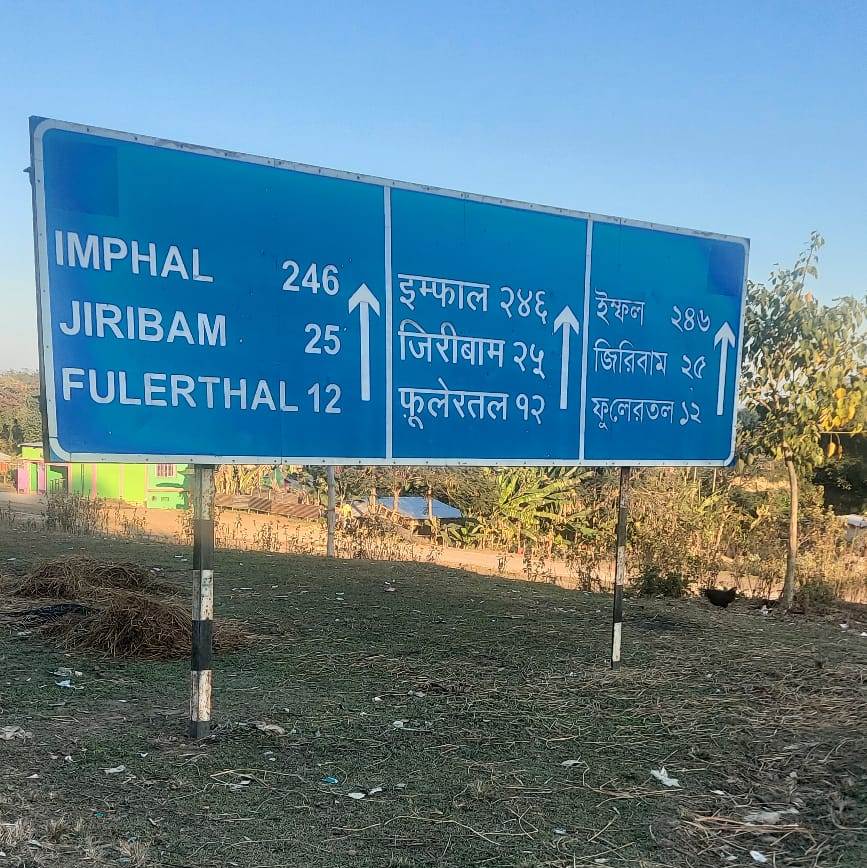
The final stretch of good road ended at Jiribam on Assam– Manipur border. Here vehicles and visitors were stringently being checked by cops for documents like the ILP, car papers, vaccination certificates, RTPCR reports etc.

From here onward, the journey became increasingly thrilling (or scary, depending on how one may see it) as the narrow road winds through hills for the entire remaining distance of 200Kms. It was also full of large potholes.
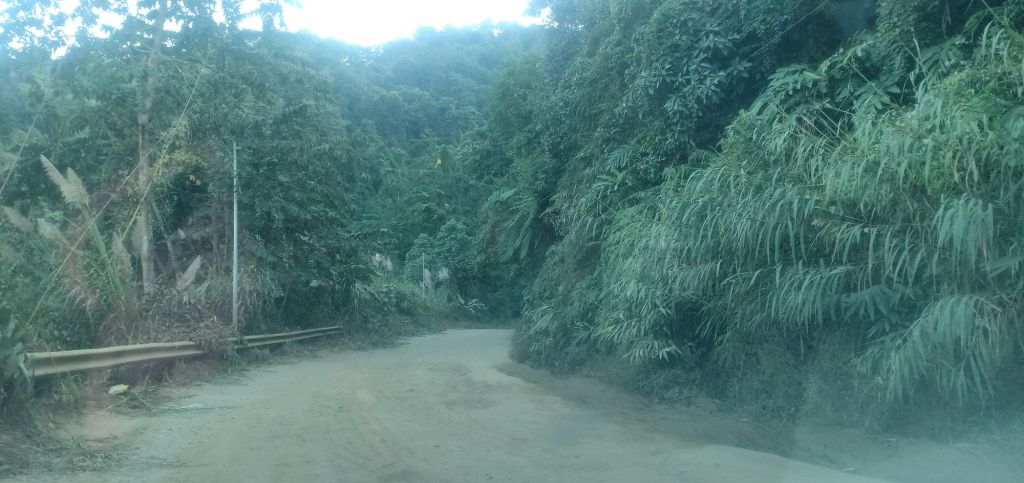
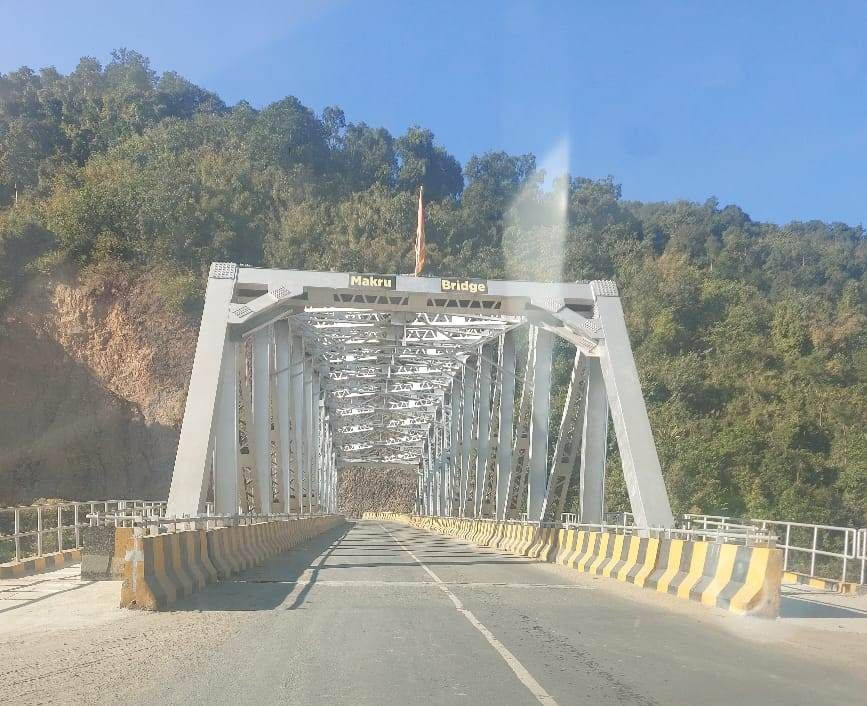
There was no worthwhile place to eat. The best we could find was this wayside paratha- and- bath joint for truckers.

Darkness fell quickly all around us. The sparse milestones, whenever we could see them, indicated that our driving speed was depressingly low, just about 20Kmph. At this rate, we could only hope to reach Imphal by midnight at the earliest.
On the way, we crossed the famous Barak bridge in pitch dark. This is an old, shaking, rickety suspension bridge laid in tandem. It has lived its life but continues to be in use. Crossing it requires serious guts on part of the driver.
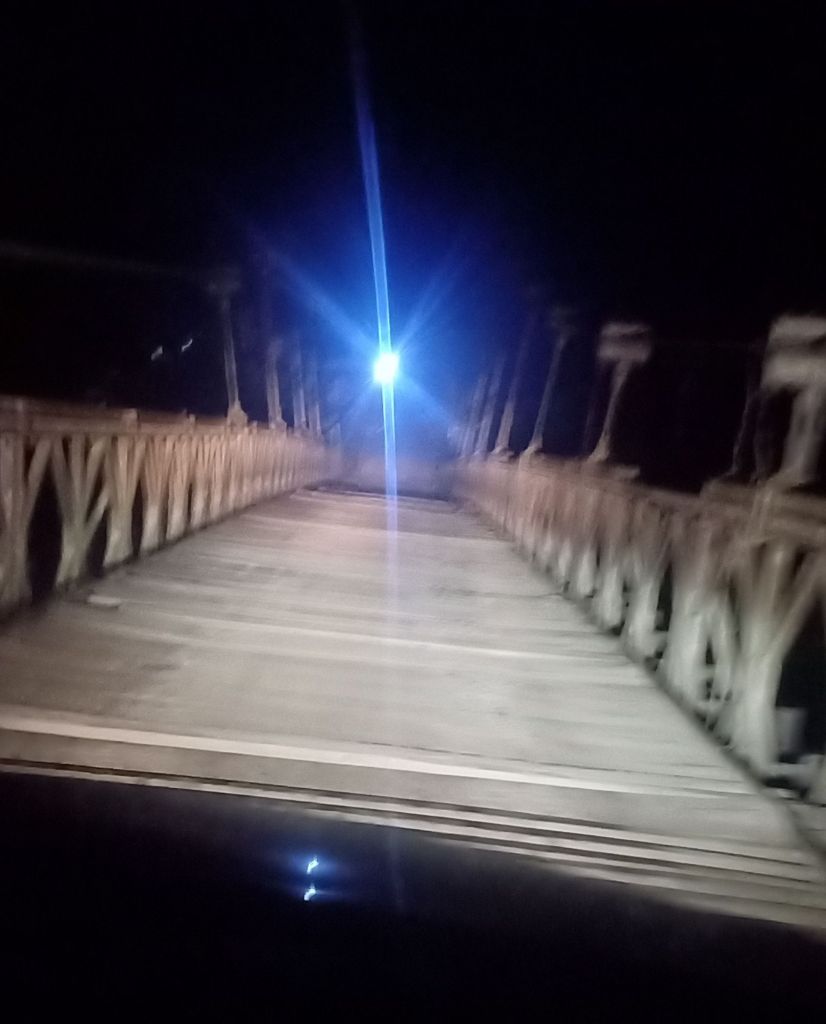
We could click some decent photos of the bridge only during our (daytime) return drive three days later. They are appended at the end of this post.
Beyond our car headlights lay absolute black darkness, although we could sense deep forests all around us. The drive seemed to be endless, made ominous by the late hour. We aren’t even talking about the inherent dangers of traveling in the dead of night in a region where numerous armed rebel groups are always battling the national army.
Nevertheless, we safely touched Imphal by 1.30am. Shivering in cold and thoroughly tired- but feeling relieved.
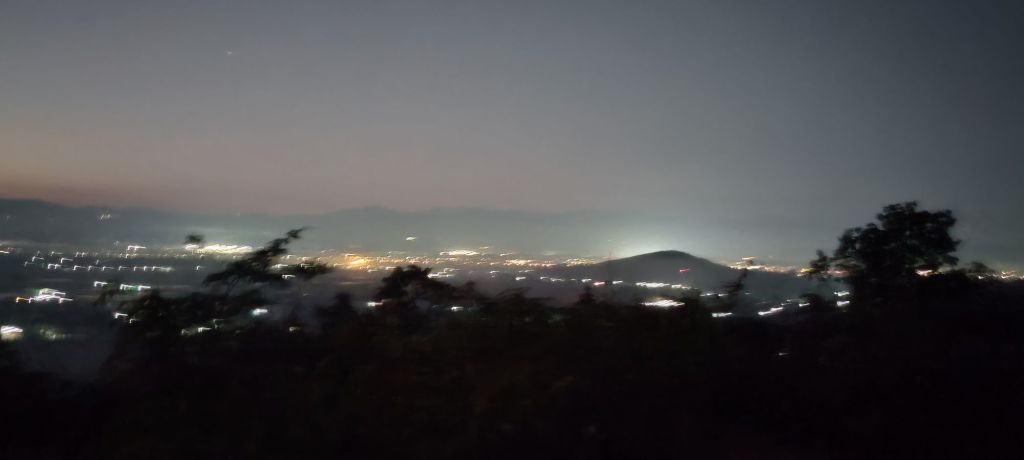
Our hosts, the Keirungbas had thoughtfully kept the dinner served. A quick bite and it was time to tuck in for whatever was left of the night (The dawn breaks at 5.00am in the North East)!
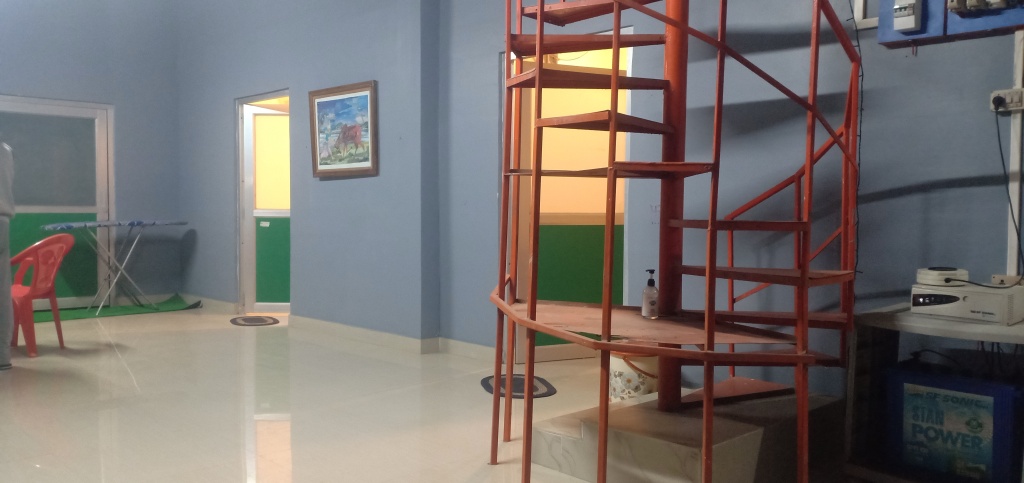
—-
Day Three: Loktak Lake
Completely worn out by yesterday’s 19- hour long journey, we opted to stay indoors for a leisurely time, taking in the serene morning views around the Keirungbas’ ancestral house, until the breakfast arrived.
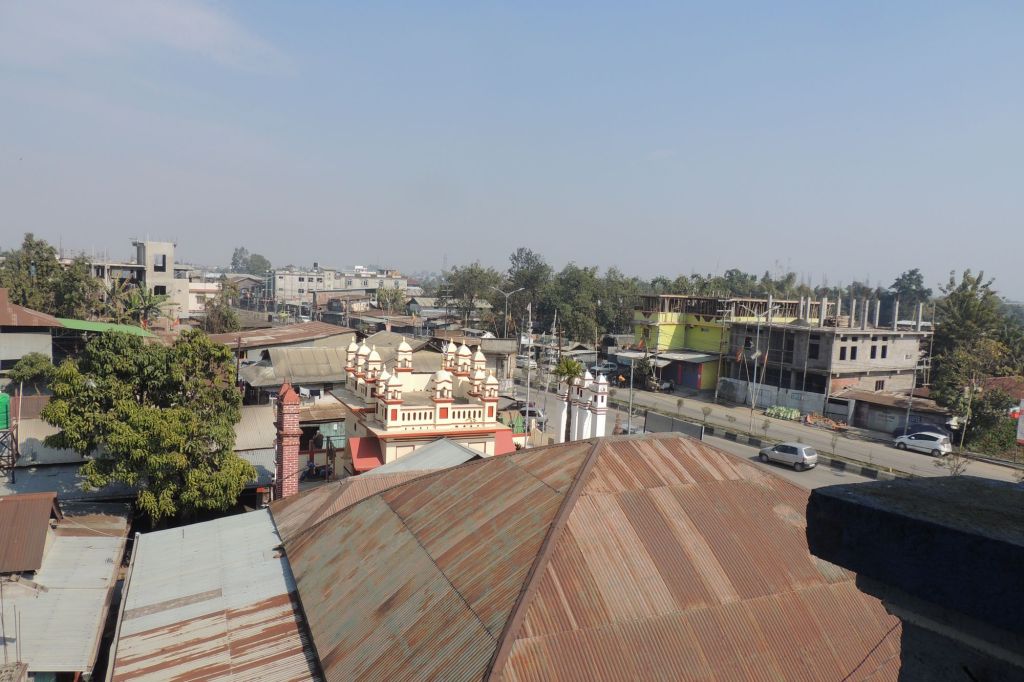
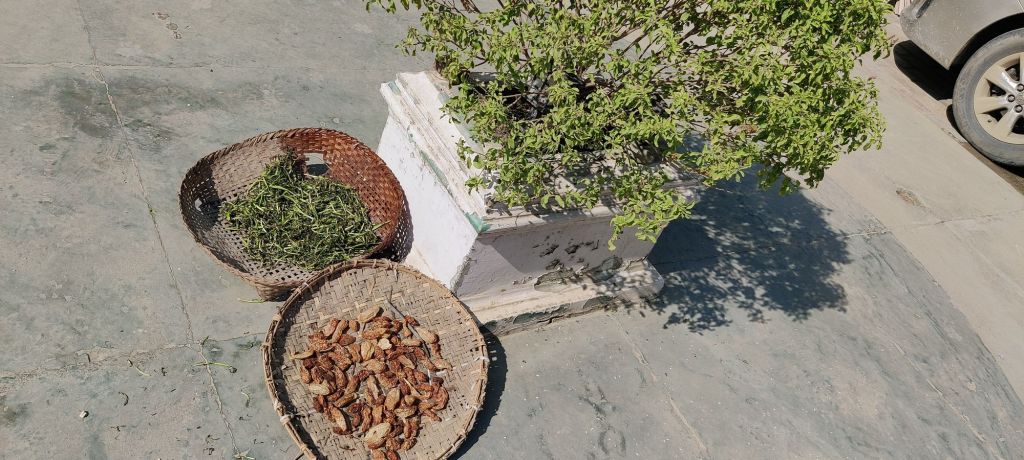
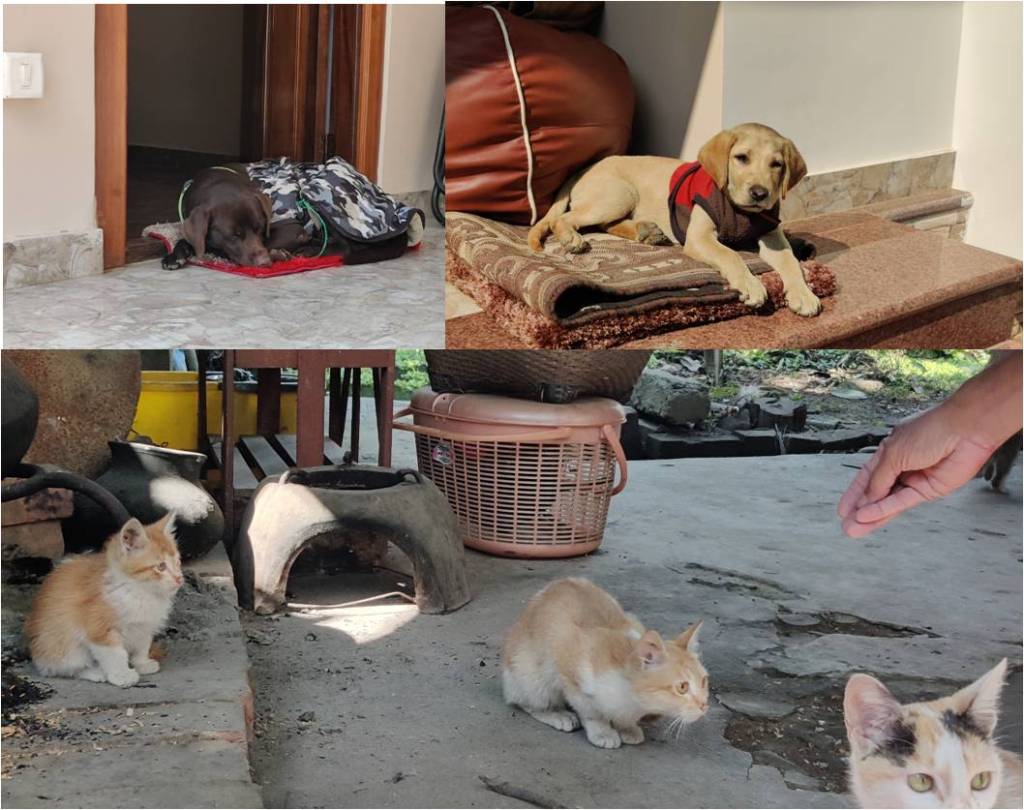
Our hosts helpfully suggested that we should keep only Loktak Lake on our day’s itinerary since we were starting late. Accordingly, we set off for is known as the Jewel of Manipur.
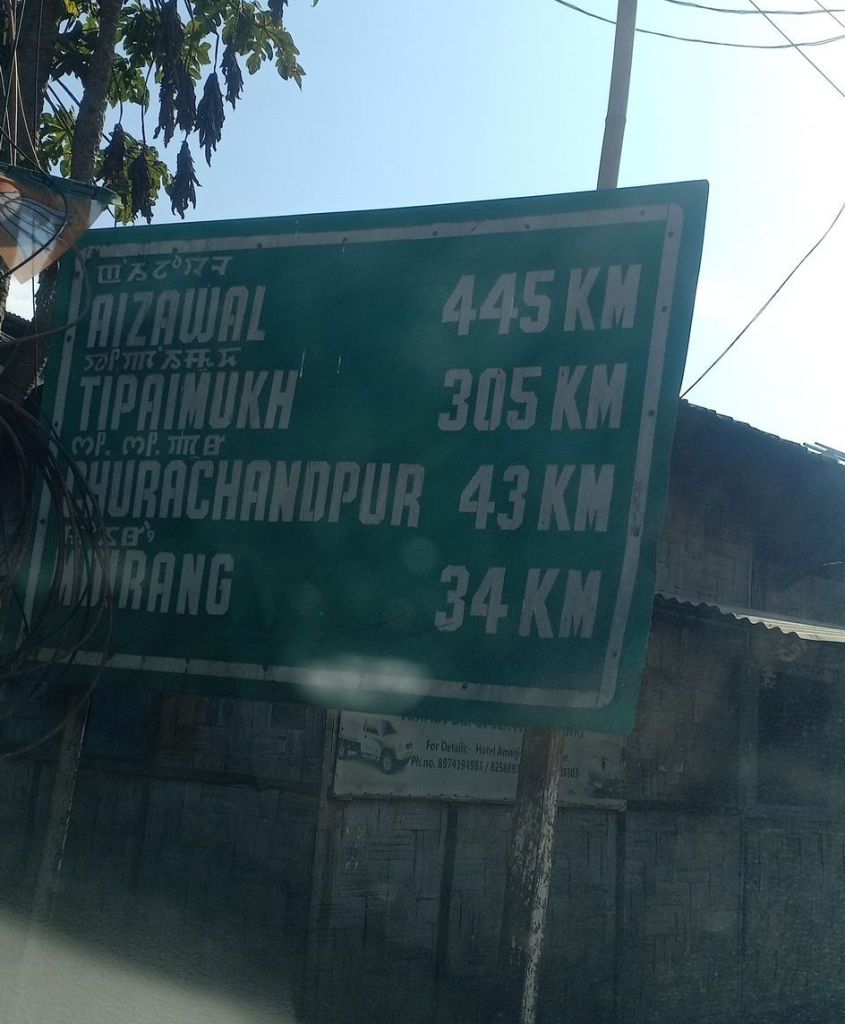
Loktak Lake indeed lived up to that description. It is a vast, sparkling water body with which entices a visitor at the very first look.
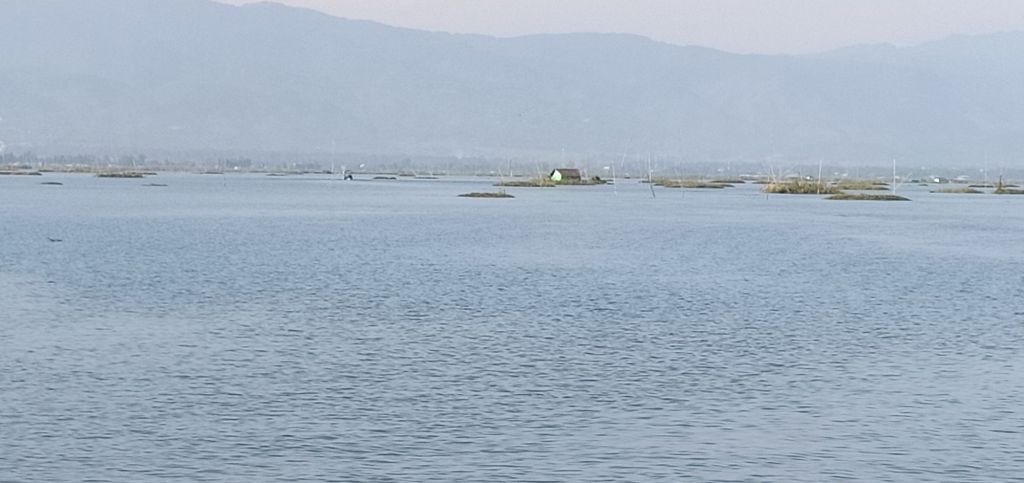
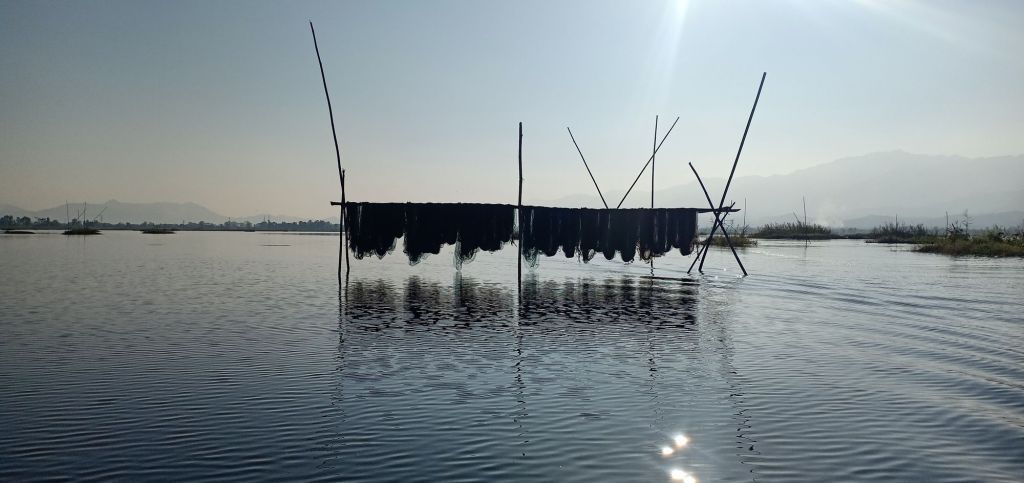
Its USP, of course are the floating islands. One can hire a boat and visit some of them.
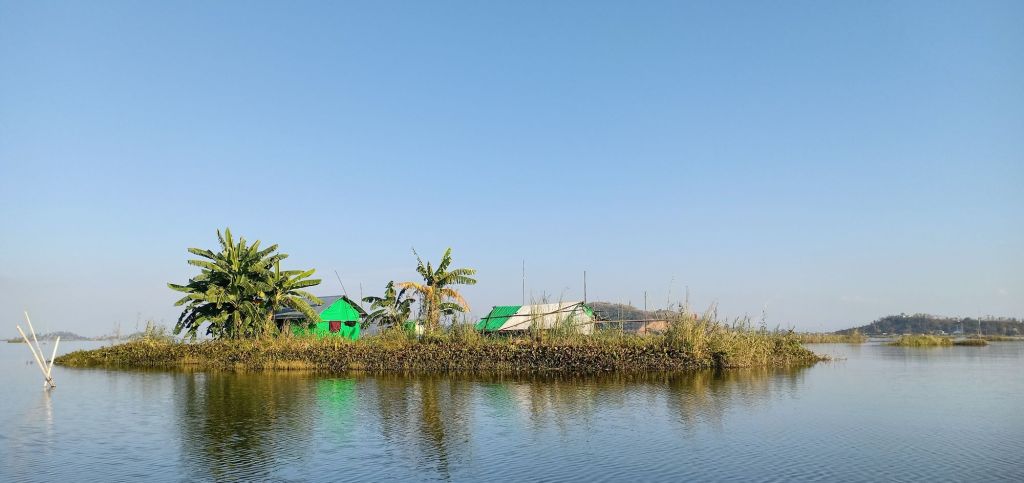

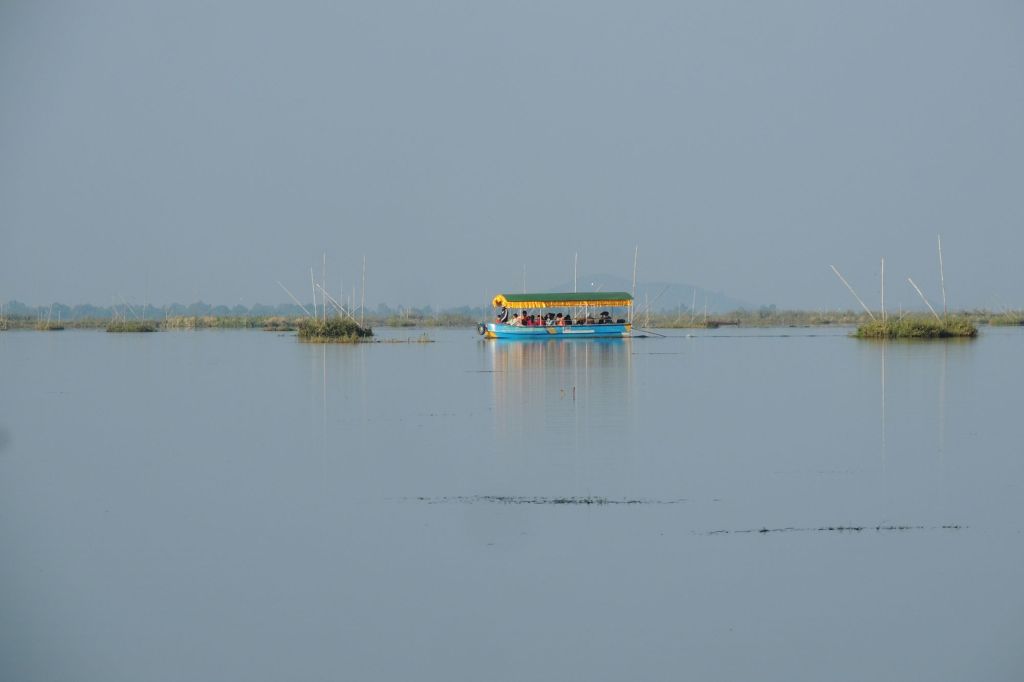
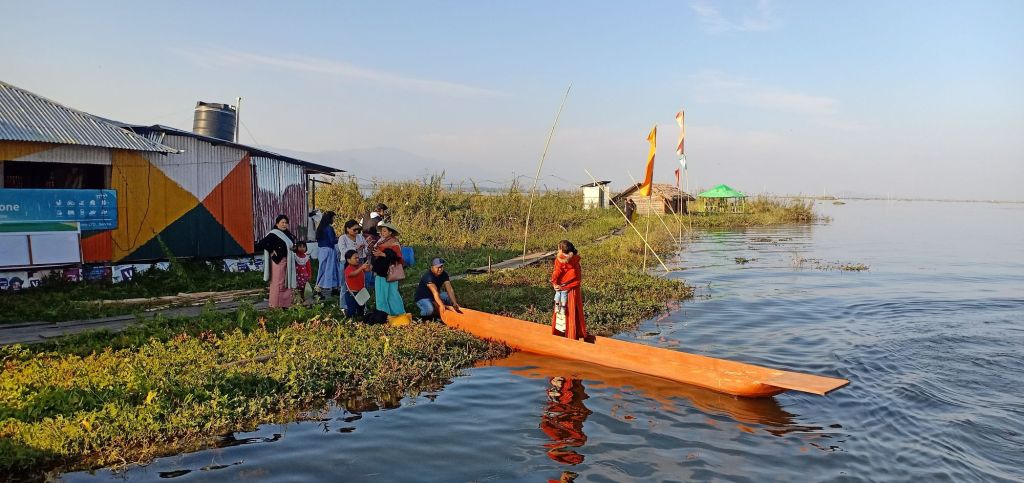


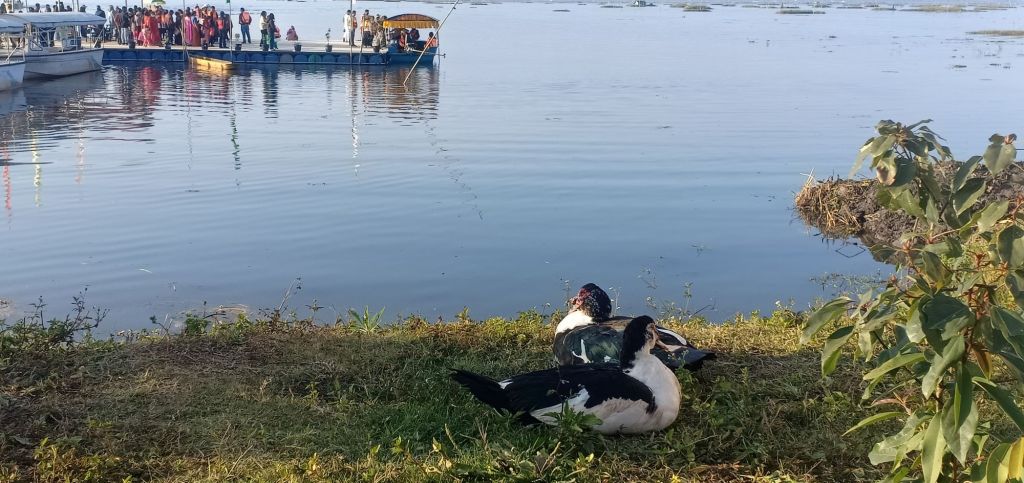
The lakeside was full of picnicking tourists, local and non- local alike.
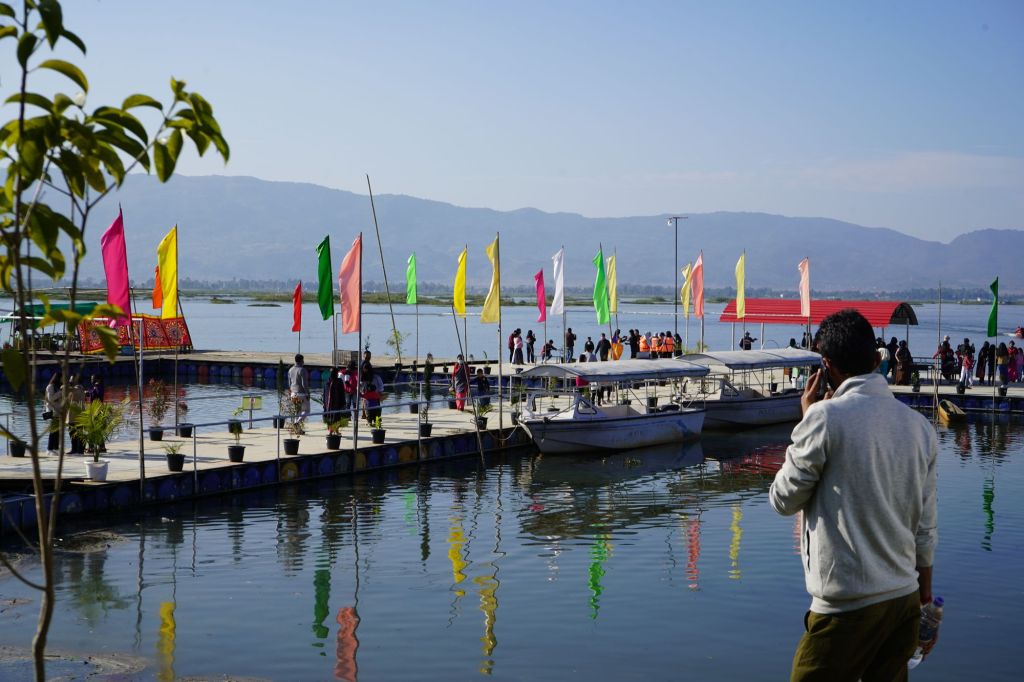

Another interesting thing about Loktak Lake is that it is full of underwater grass which is an incredibly beautiful sight to see. It apparently keeps the water clean too.

——
Day Four: Imphal City
Our hosts had planned a very unique experience for us. We were going to join the Puja and Mahaprasad at the famed Narsingh Thakur temple in Imphal.

This sacred ritual is so popular than advance booking is required for participating in it. The atmosphere was pious and charged with devotion.
The simplicity of it all was the most remarkable aspect. The second most noteworthy thing was that male and female devotees were nearly equal in number. Everyone (except us) was dressed in traditional Vaishnava Hindu attire.
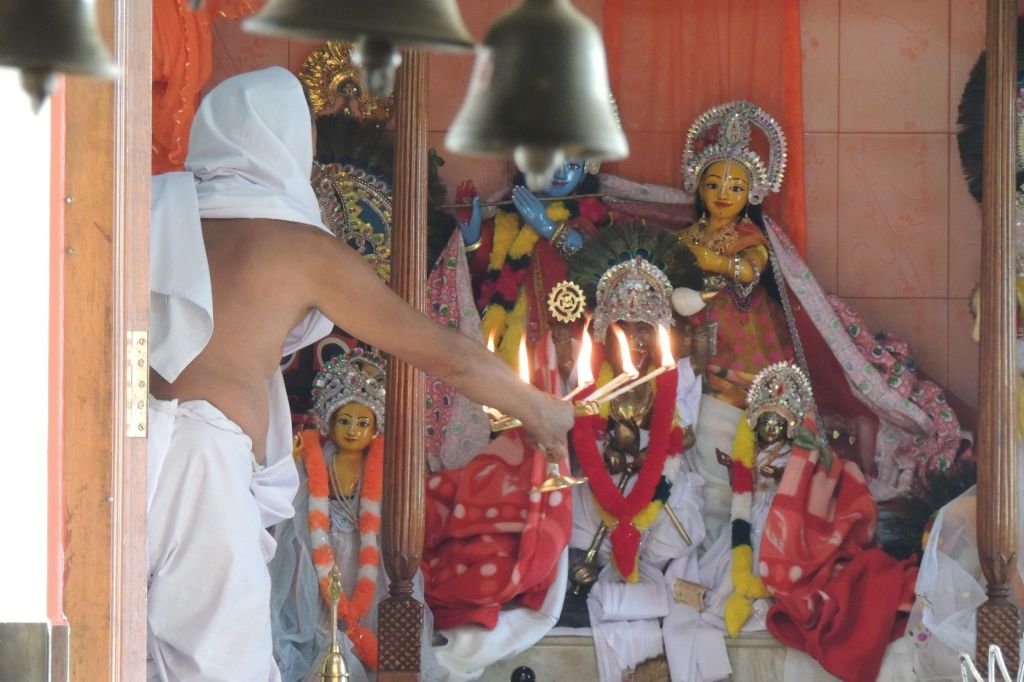


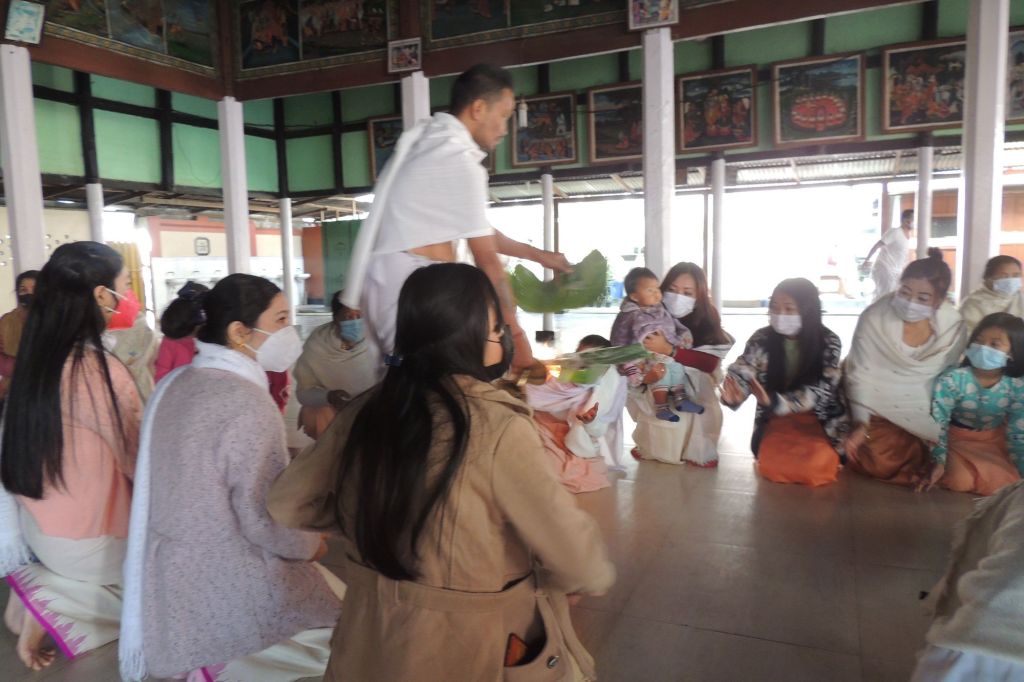
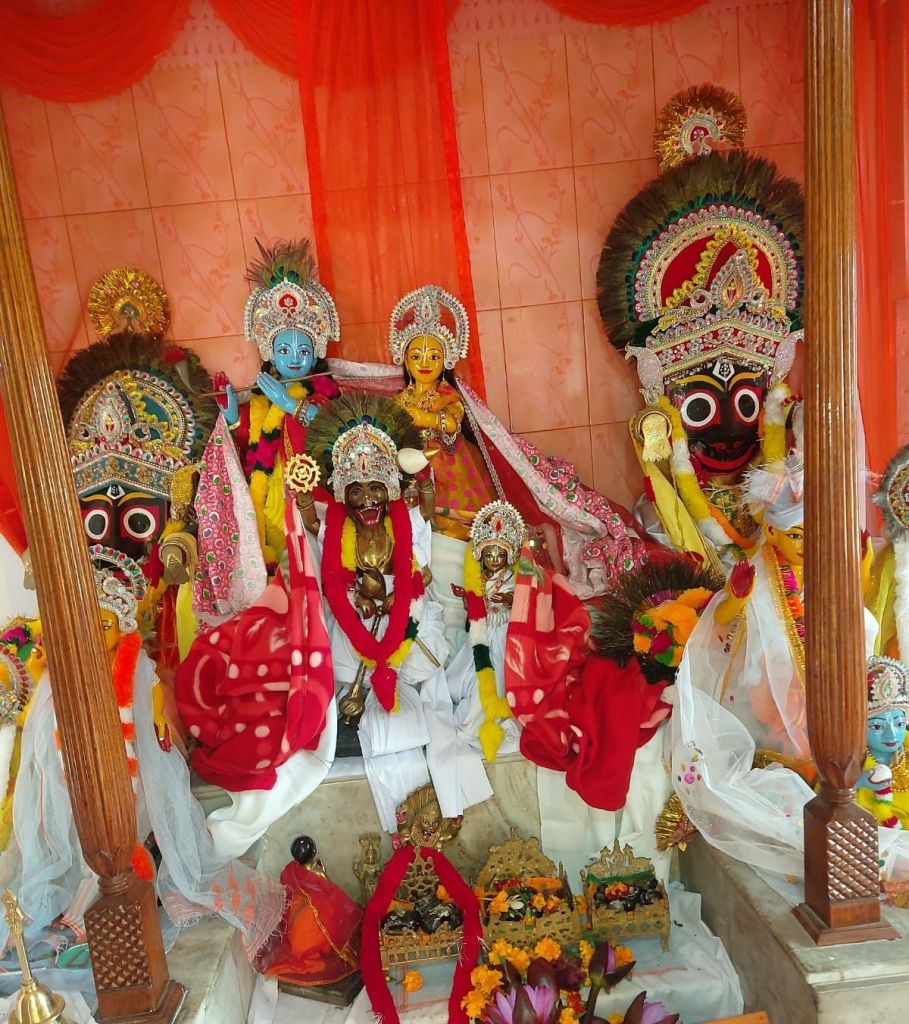
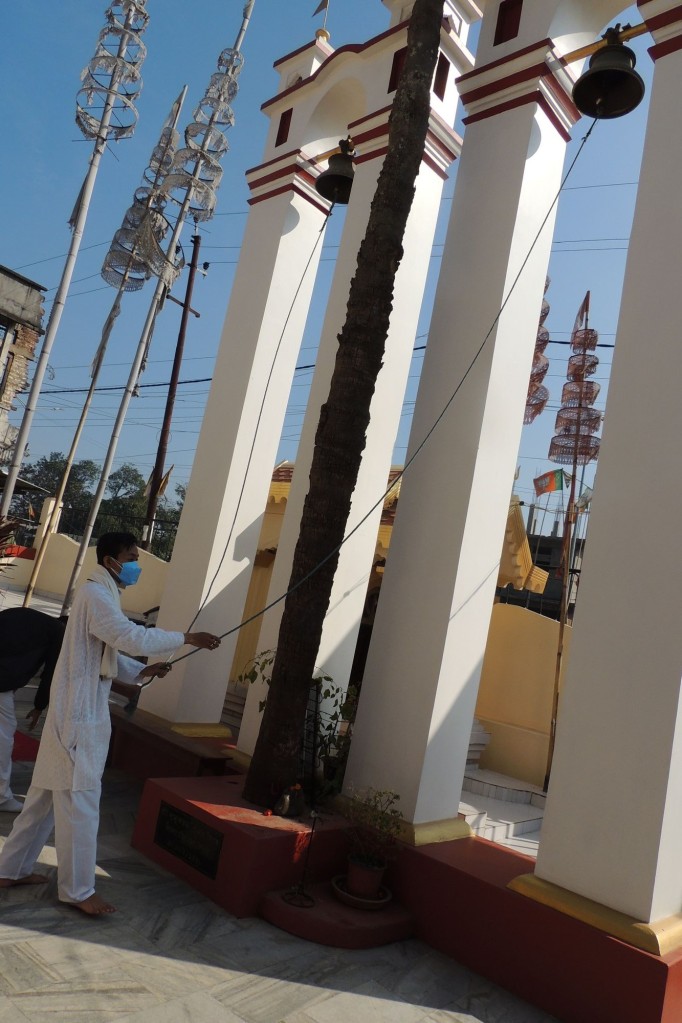
The Aarti and the related rituals proceeded for over half hour. Thereafter, preparations began for the Mahaprasad.
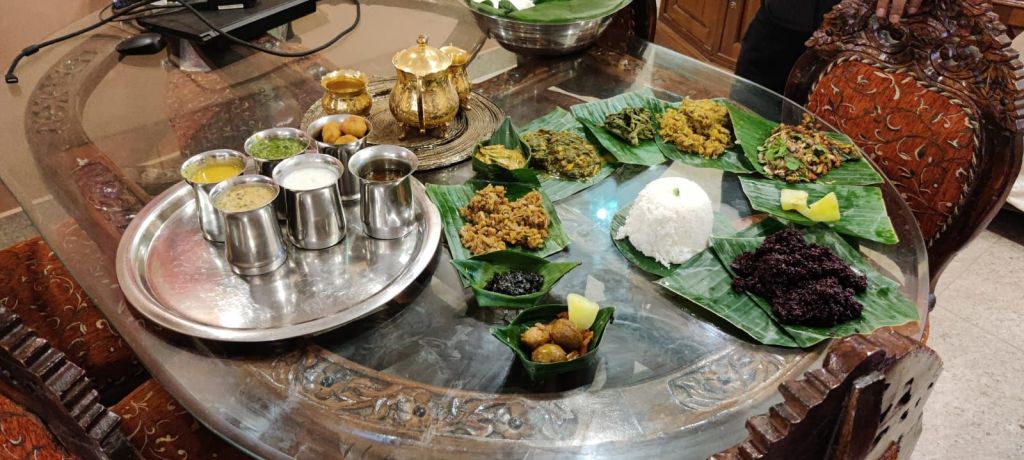

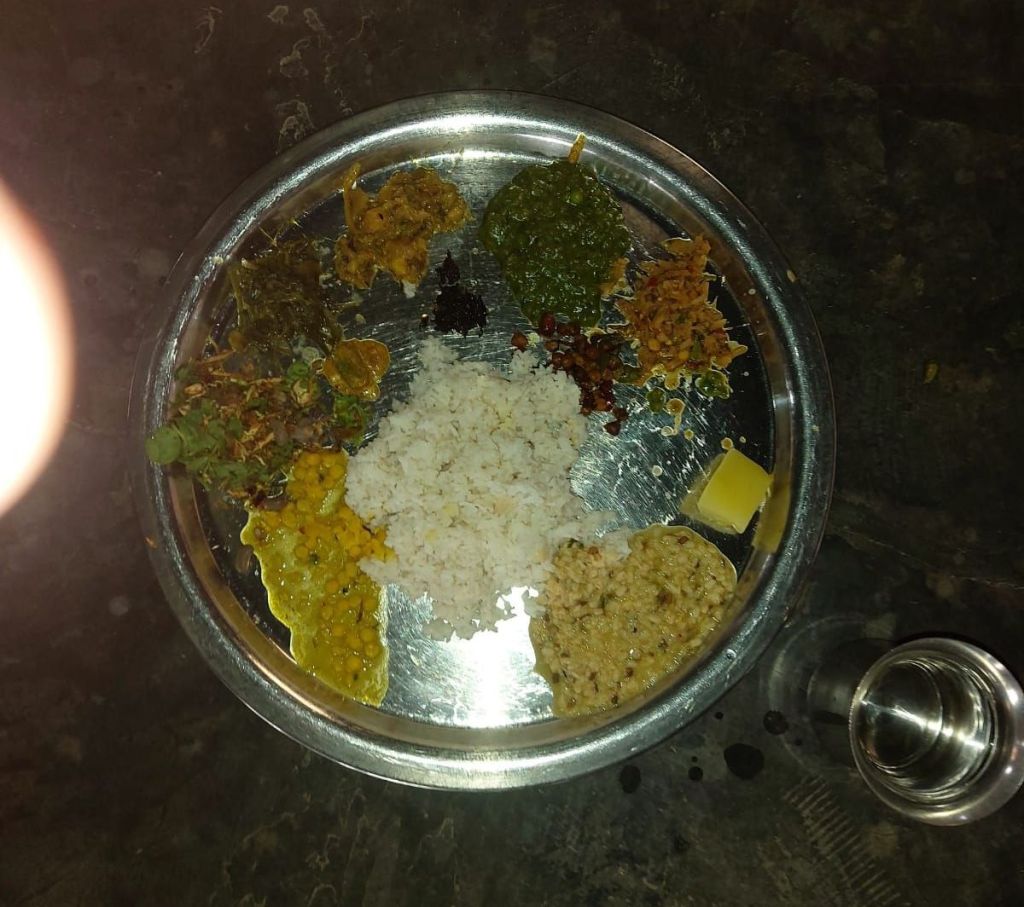
Over 200 devotees partook the Mahaprasad sitting on the floor, without any distinction of class or status.

Initially, I was quite intimidated to see the mountain of rice served in my plate but managed to finish it clean. Perhaps the appetite of my fellow Manipuri devotees inspired me.
After the Mahaprasad, we began our tour of Imphal city, starting with the Kangla Fort.

The fort is very well maintained and well-managed. There are guided tours on battery cars available. The guides are local young ladies who enthusiastically speak of Manipur’s history and culture. Temples, museums, there is plenty to see inside here and one should set aside a couple of hours.

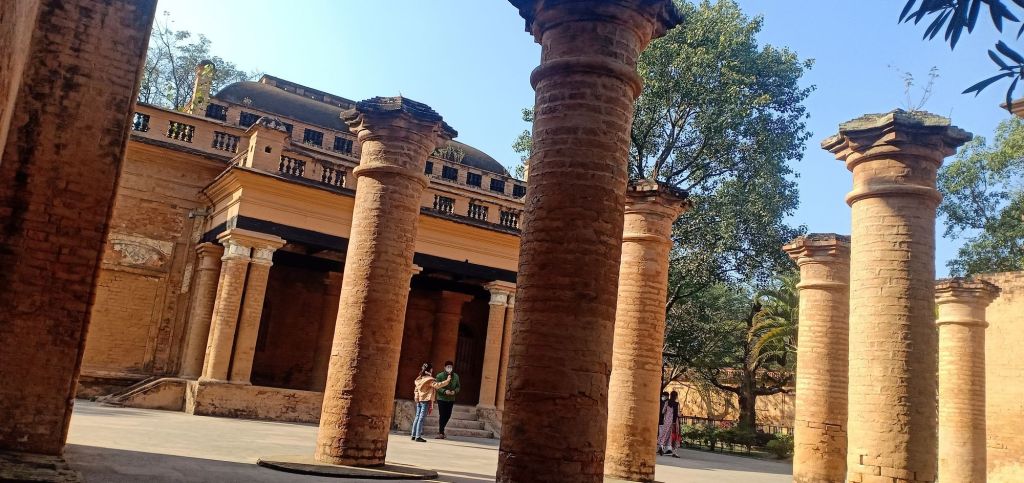
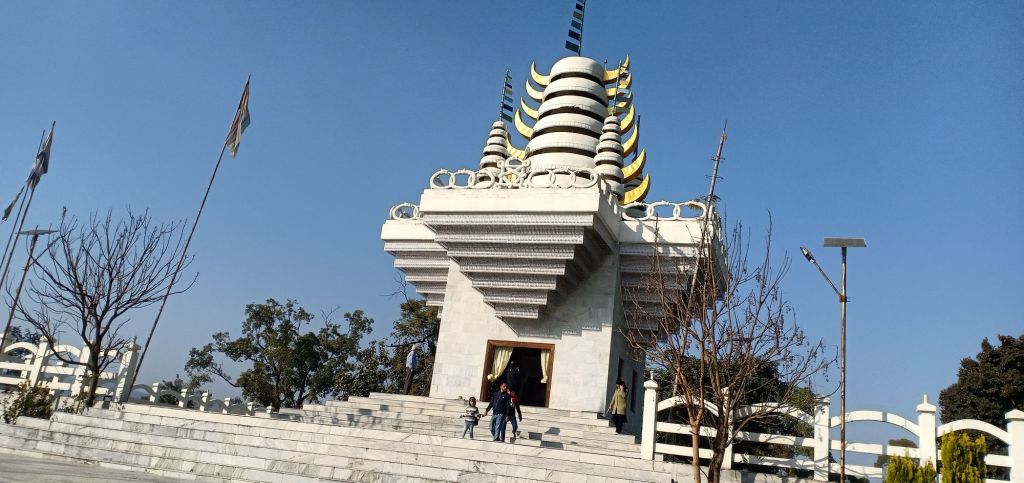
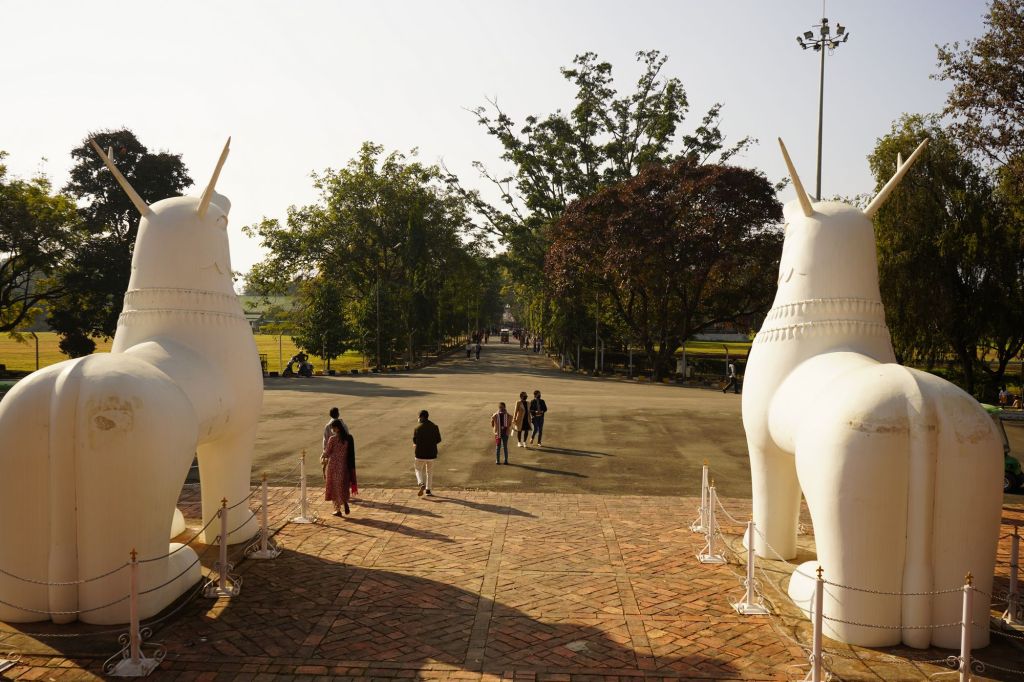

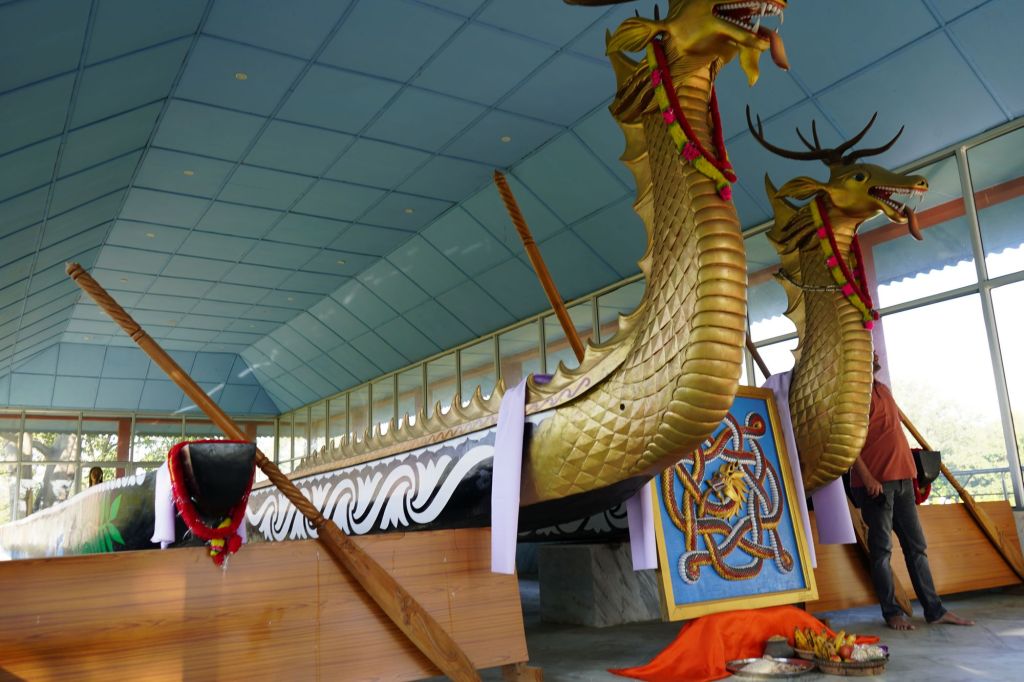
The third place we saw in Imphal was the Commonwealth War Cemetery. I had seen another one in Ranchi many years ago. This one was equally clean, peaceful and solemn. Rows of tombstones stood as testimony to the momentous devastation brought down by World War II.
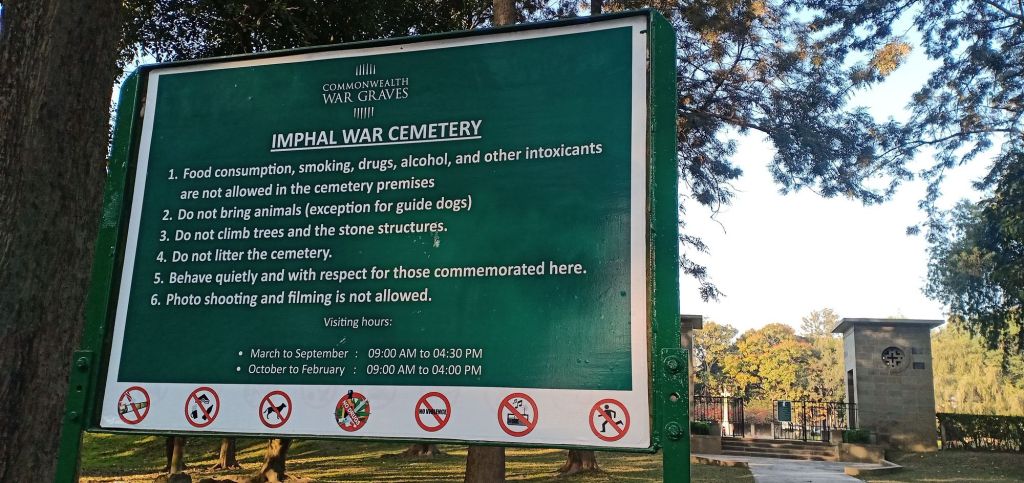
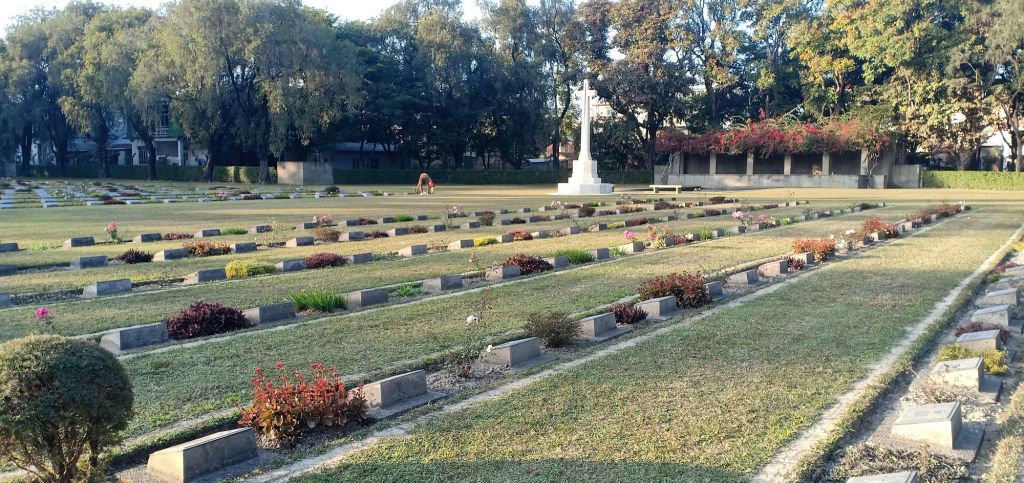
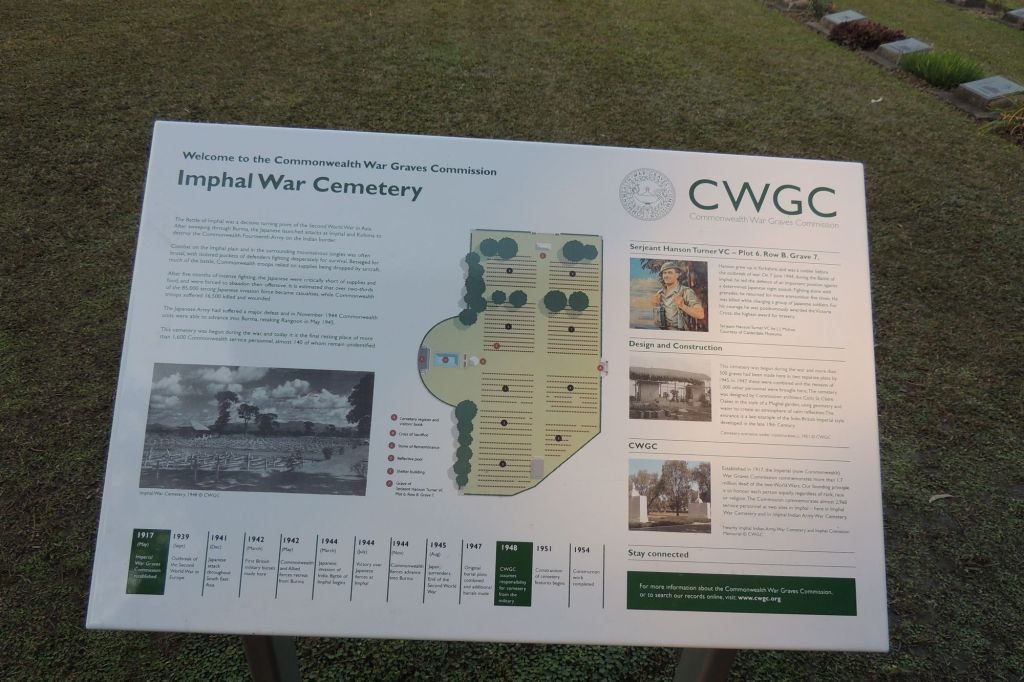
Reading the names and addresses of soldiers who died on battlefields in prime of their youth (most were below 25 yrs of age) and lie buried in these cemeteries is a deeply moving experience.
The Imphal cemetery mostly has American soldiers. A few are Indian.
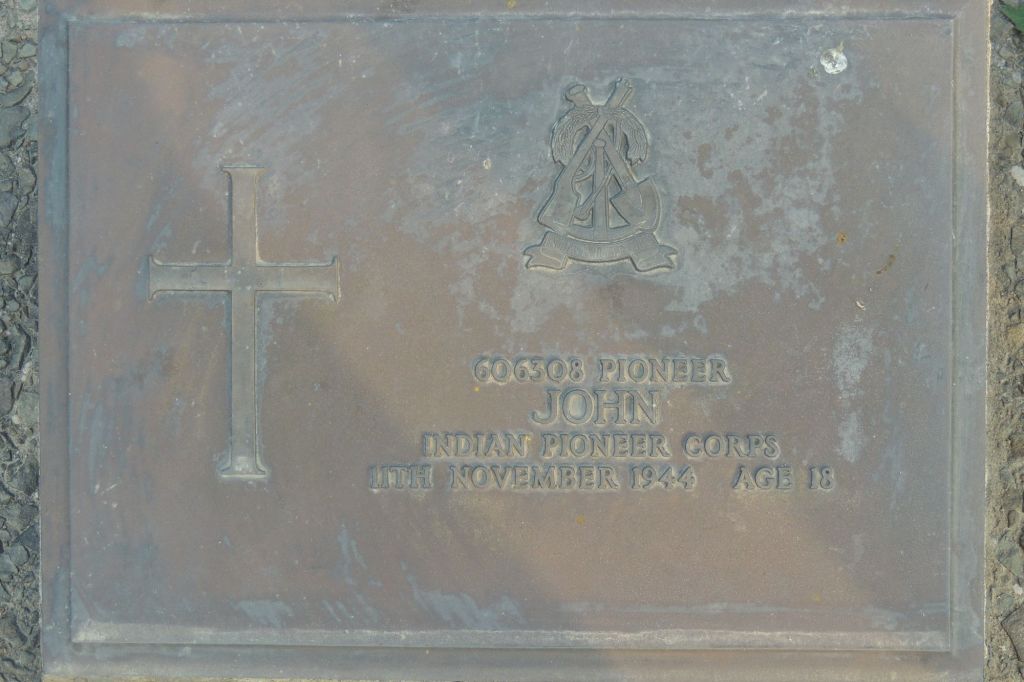
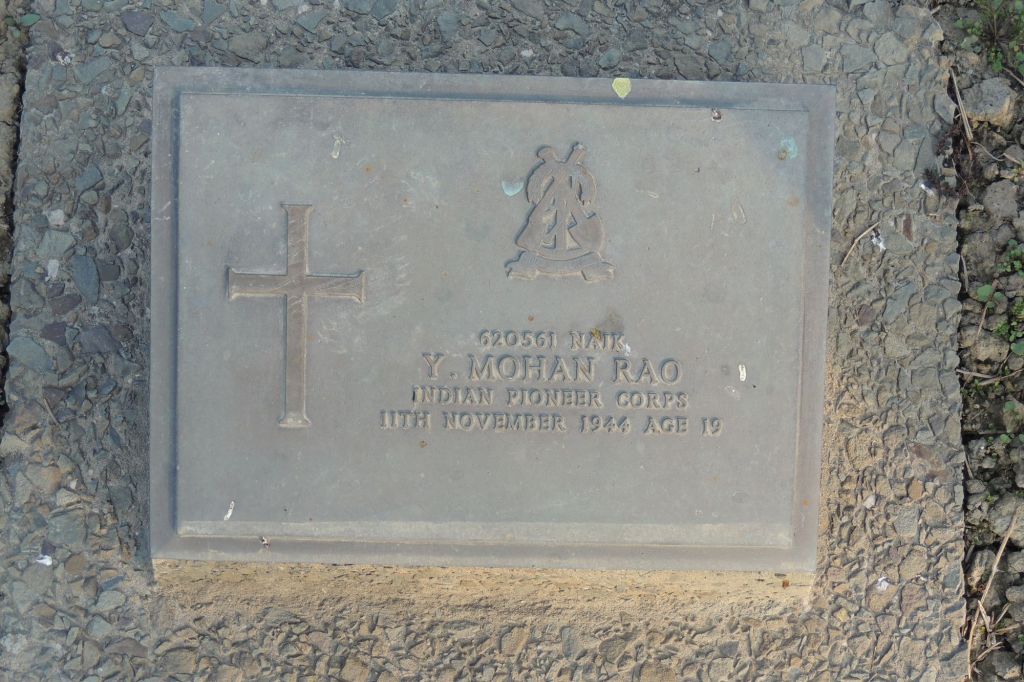
Identities of some remain unknown.
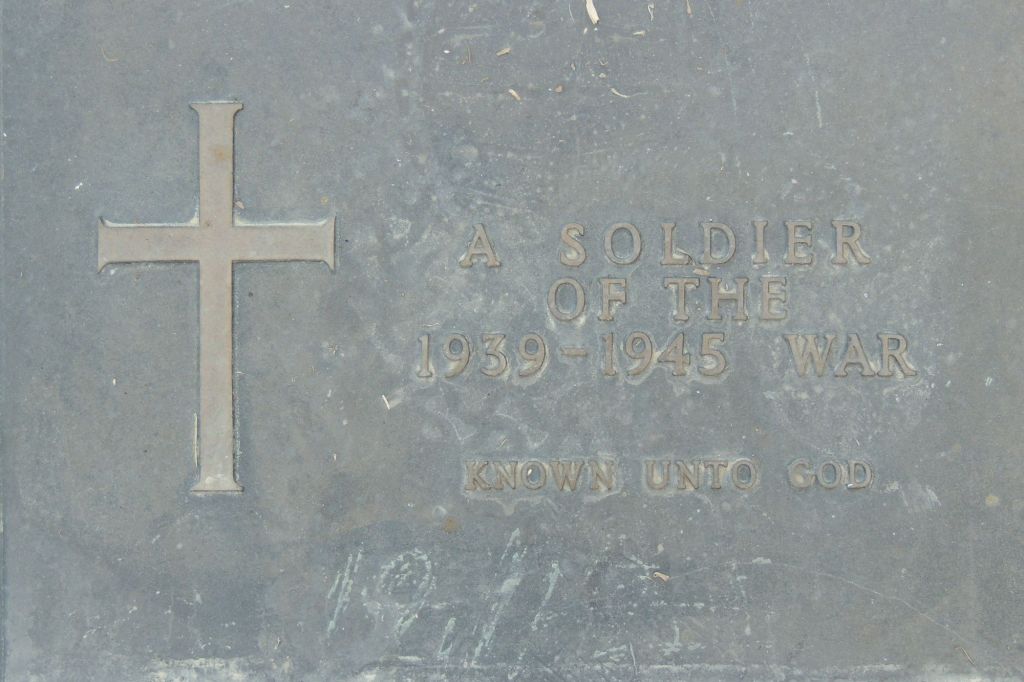
One is transported in time to the European or American countryside of last century and left imagining the kind of world which these youth came from, the brief lives they lived, the bonds they formed with their comrades, the brutal wars they fought thousands of miles away in alien continents and the families they left behind. The politics and morality of war recede to take a backseat for the moment.

—–
Day Five: Moreh and Khongjom
Our last day in Manipur was reserved for a trip to the trading town of Moreh on Indo– Myanmar border. Moreh is 100-Km away from Imphal but it is mostly a pleasant drive with a good road and sparse traffic.
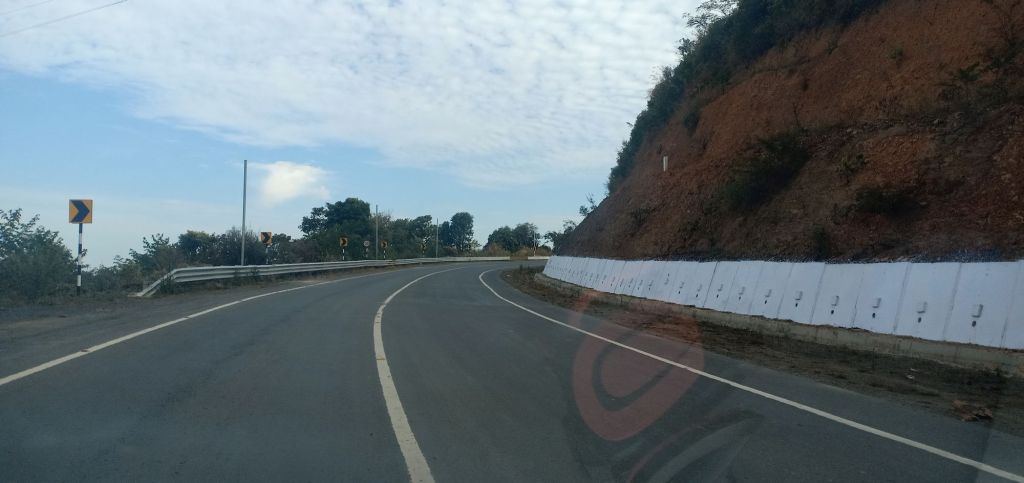

However, one has to be prepared for a lot of stopping and questioning by numerous Assam Rifles check posts that lie along the road.

Enchanting landscapes such as this line the road all along.
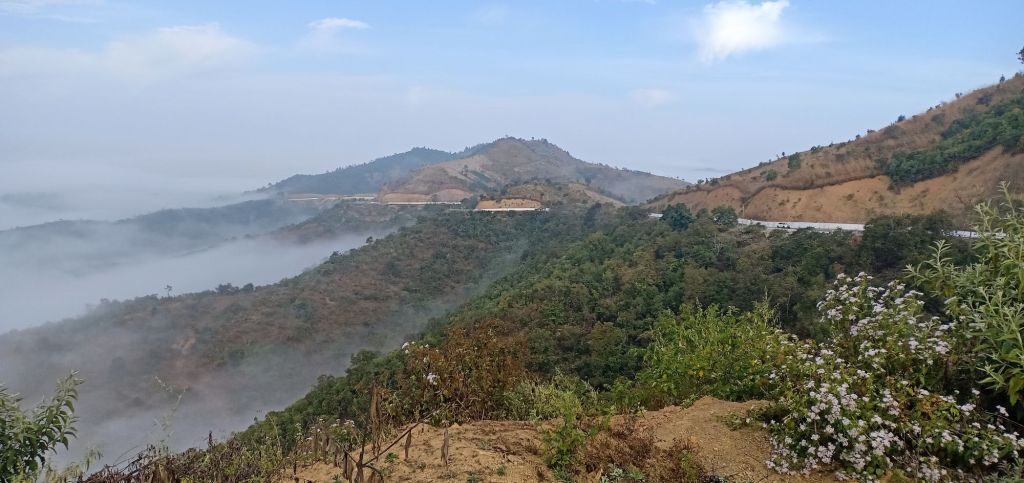
Usually Moreh is a bustling market. Though at present there are a lot of covid- caused restrictions leading to a subdued sentiment, the trans-border trade is still going on.
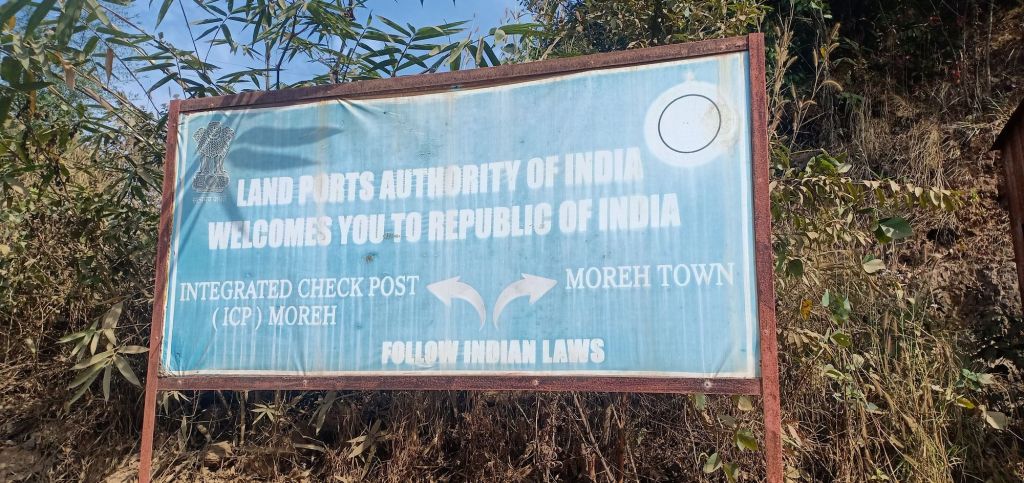
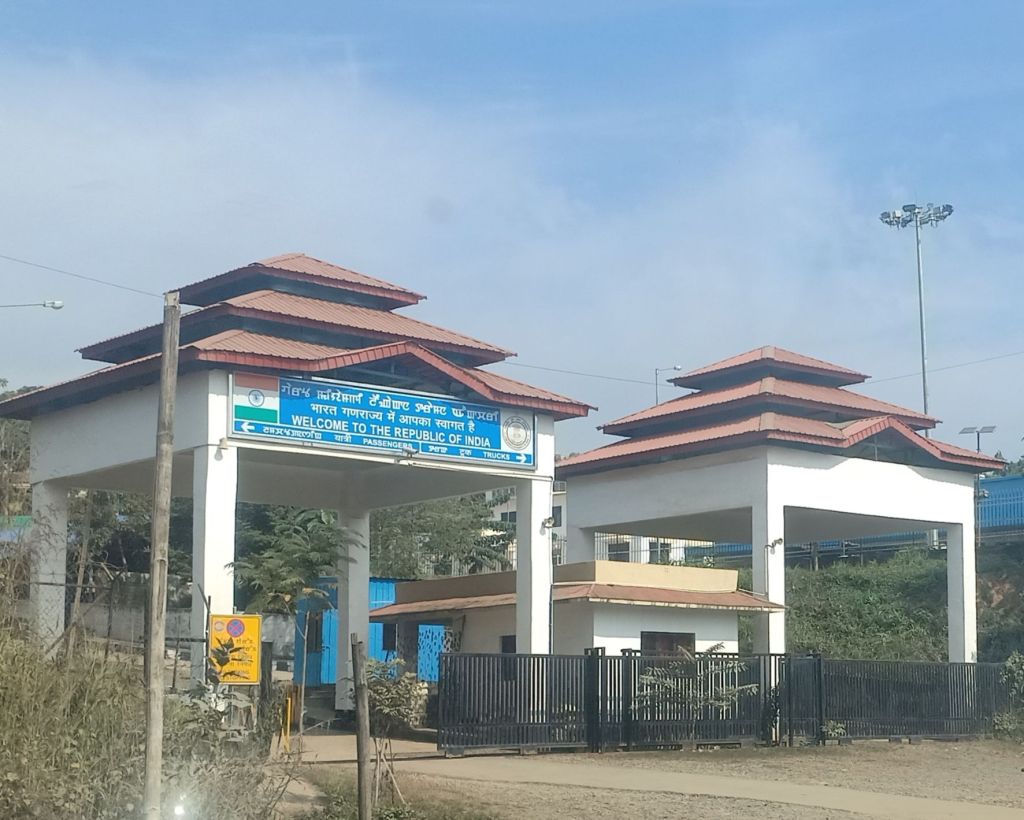
The first chief attraction of Moreh, obviously, is the Indo– Myanmar friendship bridge on Menal river. Everybody has to pose for a picture here.

The second attraction for us was the Tamil quarter of the town. Approximately 30000 Tamils reside in Moreh. They are descendants of the teak plantation workers from Burma who were displaced due to the Japanese offensive in the Great War and had to settle here. The place indeed looks like a slice of a Tamil Nadu small town lifted and brought to Manipur, complete with dosa hotels and Tamil signboards. Truly fascinating.
The imposing Tamil temple.

The Tamil Sangam office (There is a Tamil library also).
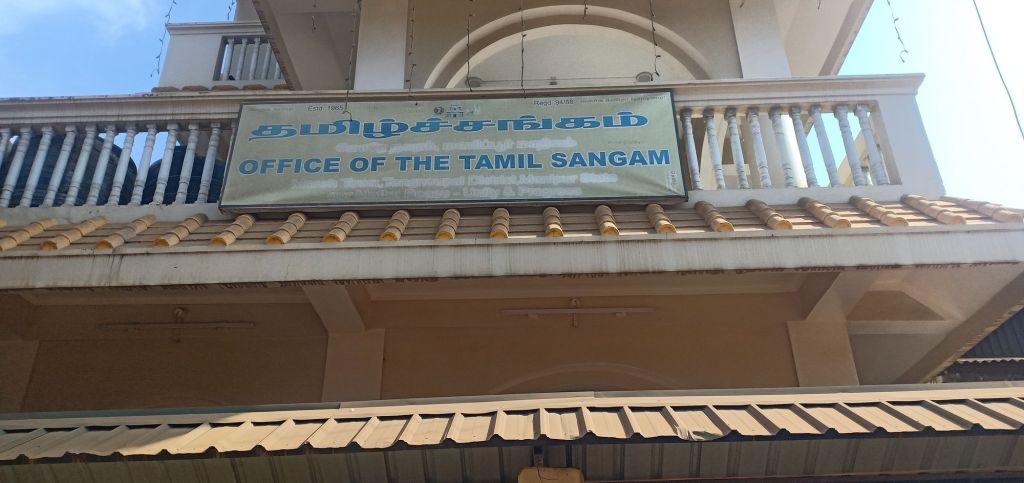

Pongal cricket tournament in progress.

On our way back to Imphal, we stopped for a look at the impressive Khongjam War Memorial

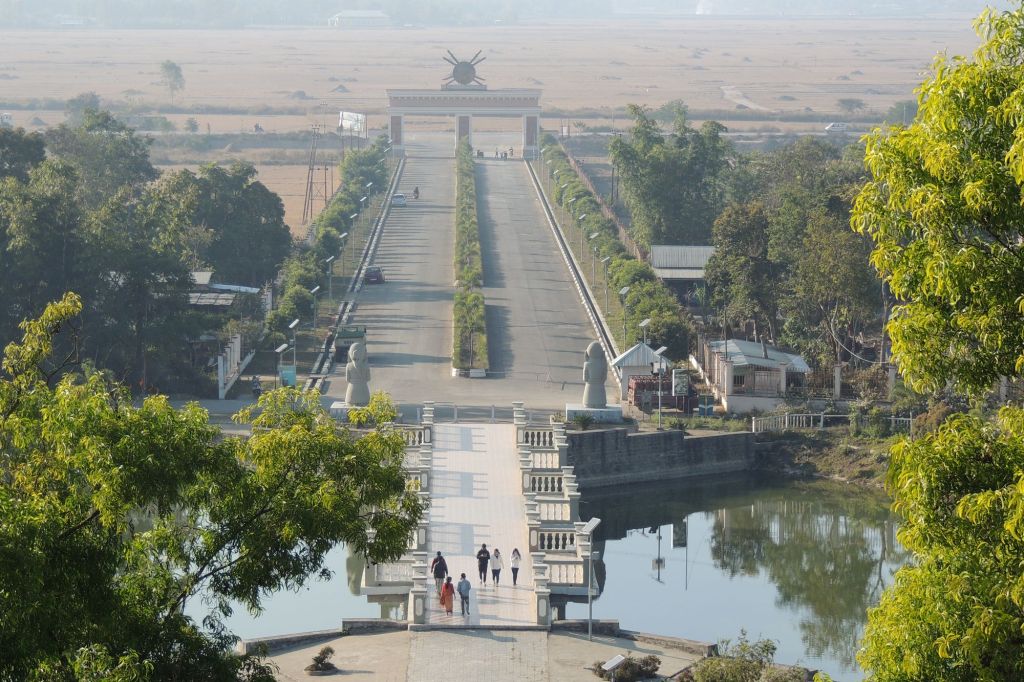

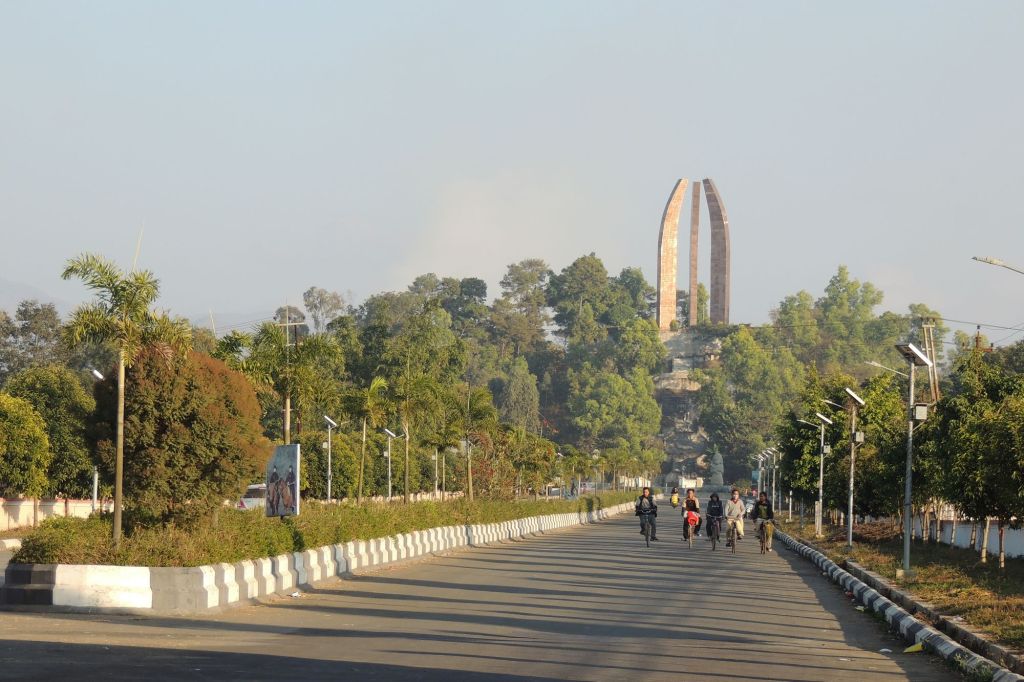

—–
In spite of our best intentions we could not cover many places in Manipur. In Imphal itself, we had to skip the Iskon temple, the War Memorial and the Mothers’ Market. We also could not go to Ukhrul District.
That only means another visit is due.
Till we meet again, Imphal!
—-
And yes, here are the daytime photos of Barak bridge we clicked on our way back. The new under-construction puccah bridge is visible in the background.

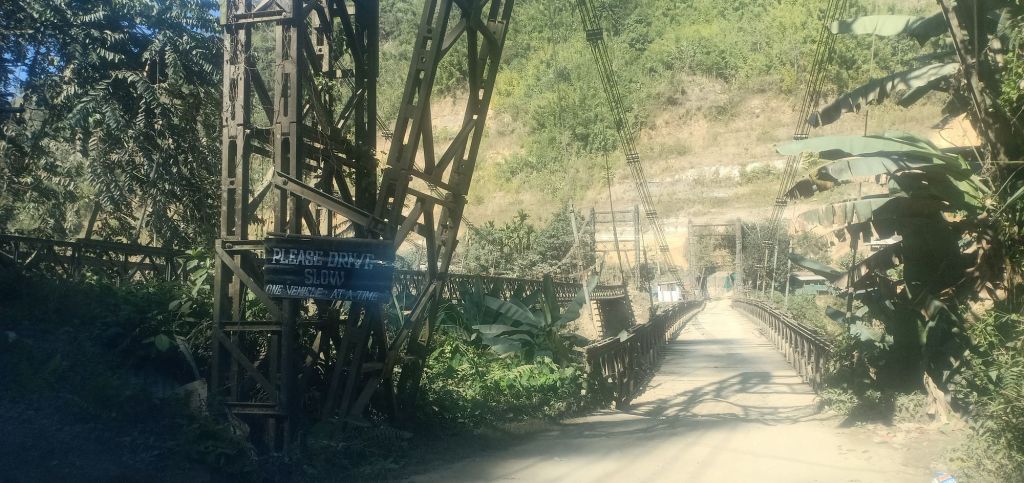
The distances:
